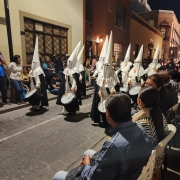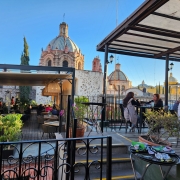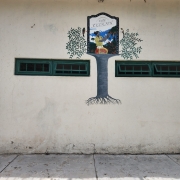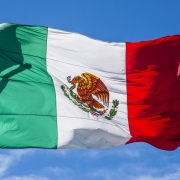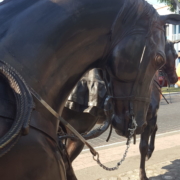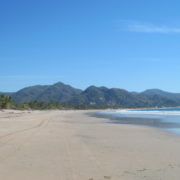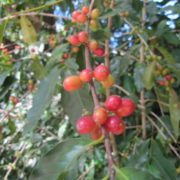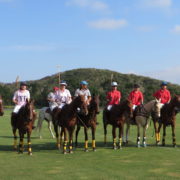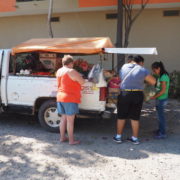San Luis Potosi Part 3
“A photograph is the pause button of life.” Anonymous
One thing, among many others, that we love about Mexico is the enthusiasm that the people show for life.
Our landlord gave us tickets for a soccer game. My husband and I are not sports fans, but we thought watching a game in person might be more interesting. On the night of the game, we headed to the stadium. There were a lot of military and police present, and the military took part in the opening ceremony.
I must apologize for the poor videos. I was so excited that I did not take the care necessary.
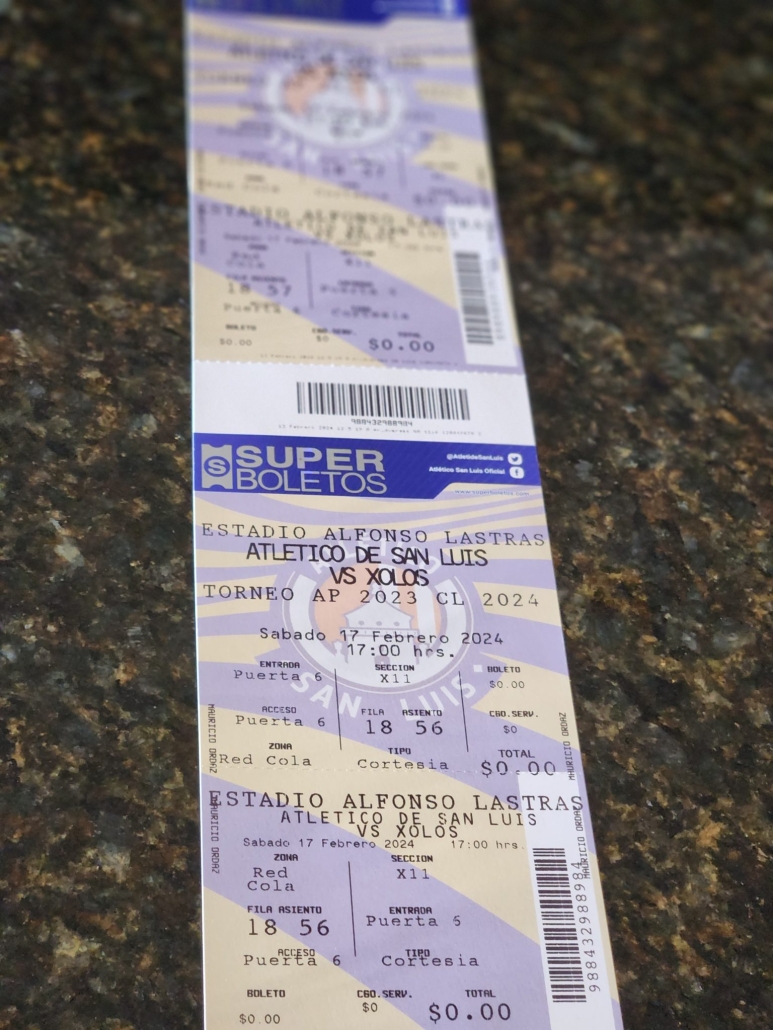
Unfurling of the flange by the army.
Watch the guy in the white hat.
We enjoyed it immensely, which I think partly was due to the spectators’ enthusiasm. I loved watching the “fake falls” from some of the players. It was very entertaining. One player fell, and when no one came to help, he jumped up and started playing again. Too funny. In the first hour, the weather was perfect, but in the second hour, the temperature dropped, and the wind picked up.
Would we go again? Absolutely, but in warmer weather.
Our next experience with the enthusiasm of the people was at a Beatles Tribute concert. I haven’t had that much fun in ages. The audience, mainly Mexican and many of whom I am sure did not speak English, sang all the songs in English. I think they knew more lyrics than I did.
I went with a few friends on my birthday to one of our favourite restaurants. There was some military ceremony happening at the square outside of the restaurant. I preferred to think that it was happening because of my birthday!!
The other video is at our Spanish English group. I was sung Happy Birthday in Spanish. He has a beautiful voice.
Catching up in Mexico – Part Two
Life is about the adventures you take and the memories you make. So travel often and live life with open eyes and an open heart. Author unknown
Catching up Part Two
We finally got settled into our apartment in Melaque. Unpacking what we needed here and leaving the rest to be taken to San Luis Potosi (SLP). It was hot and humid, but little did we know that it was going to get worse.
Our friends came for a two-week stay. We didn’t do a lot because of the heat. We spent an hour or more in the pool, which was not that refreshing. Frankly, it felt like bath water. The ocean wasn’t much better, with temperatures around 30 degrees Celsius.
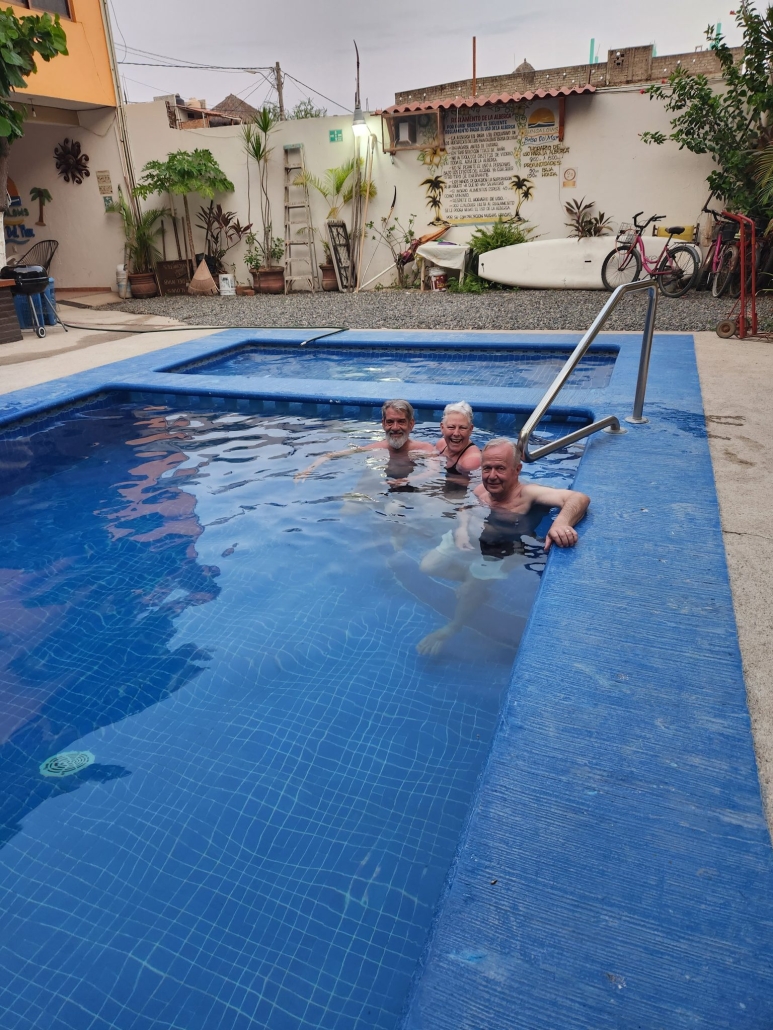
A rare picture of my husband in the pool
Walking around was not comfortable. So, we spent time in the pool, in our air-conditioned apartments, going out only to eat. One of the restaurants we chose was Kraken—excellent food and service.
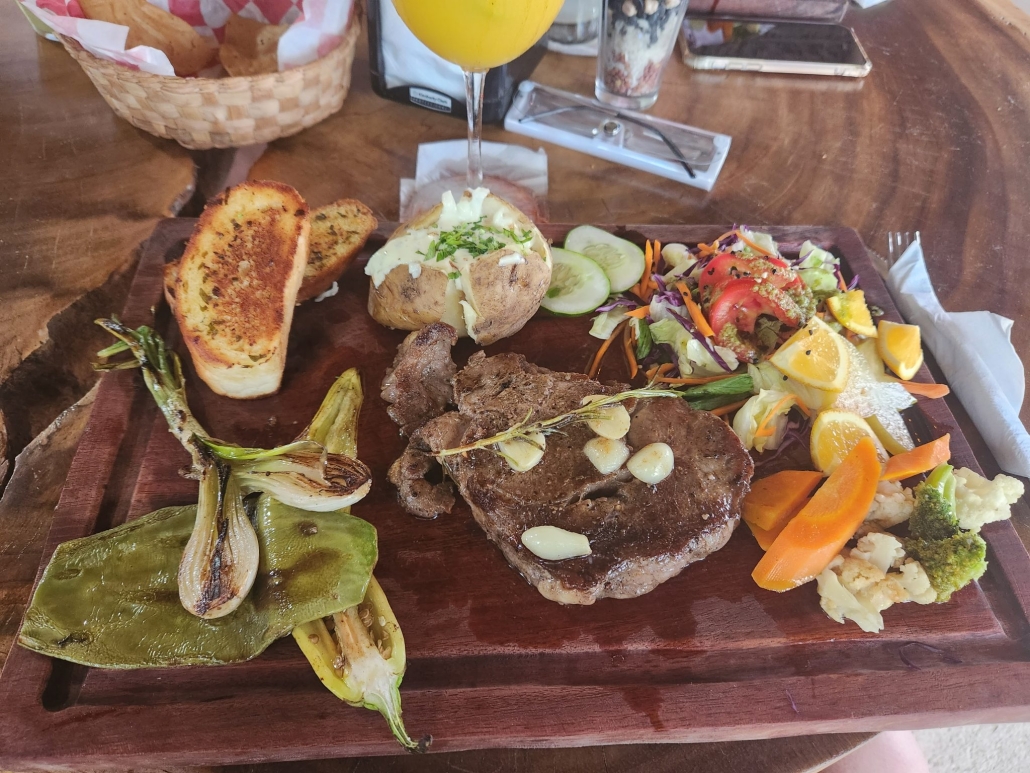
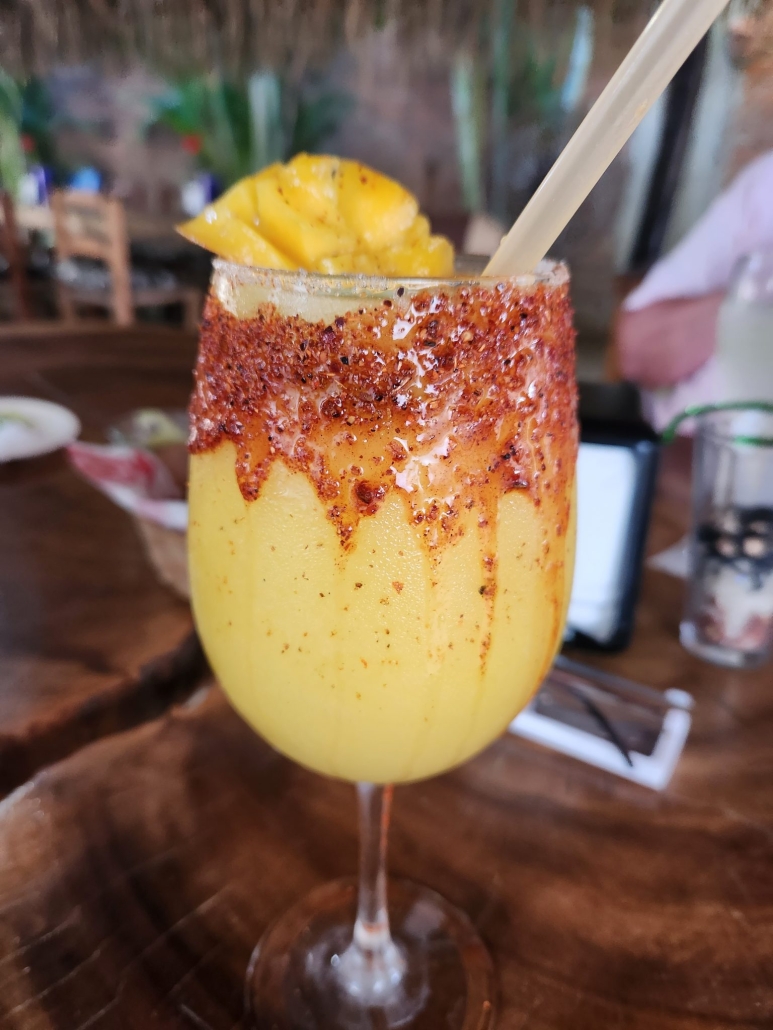
Mango margarita. Yummy
Our friends left after a week because it was not much of a holiday for them. We didn’t blame them. We only wished we were going with them.
CUZALAPA COFFEE PLANTATION – COLOUR OF THE EARTH
We booked the tour with Flip Flop Tours https://flipflopnomads.com/ Dan, the owner of Flip Flop Tours, is an awesome guide. The trip to the plantation is about an hour or two. Dan talks about the vegetation, local history, and background of the names of the towns we travelled through. He answered all questions. It was so informative and interesting. The time flew by.
I have been to this plantation many times. Dan and I thought at least 6 or 7 times. Always interesting and always new things to learn and discover. Check out my post on the plantation.
https://www.thetravellinglady.ca/color-of-the-earth-the-cuzalapa-coffee-plantation/
Rosy, the head of the co-op, remembered me! There were a few changes which was nice to see the progress that has been made. The number of products that they sell from the surrounding communities has increased. This was good to see; as you know, it is helping not just the coffee plantation but also the communities.
We had planned a trip to the coffee plantation in Cuzalapa. We decided to go anyway. There were a few more friends that came along.
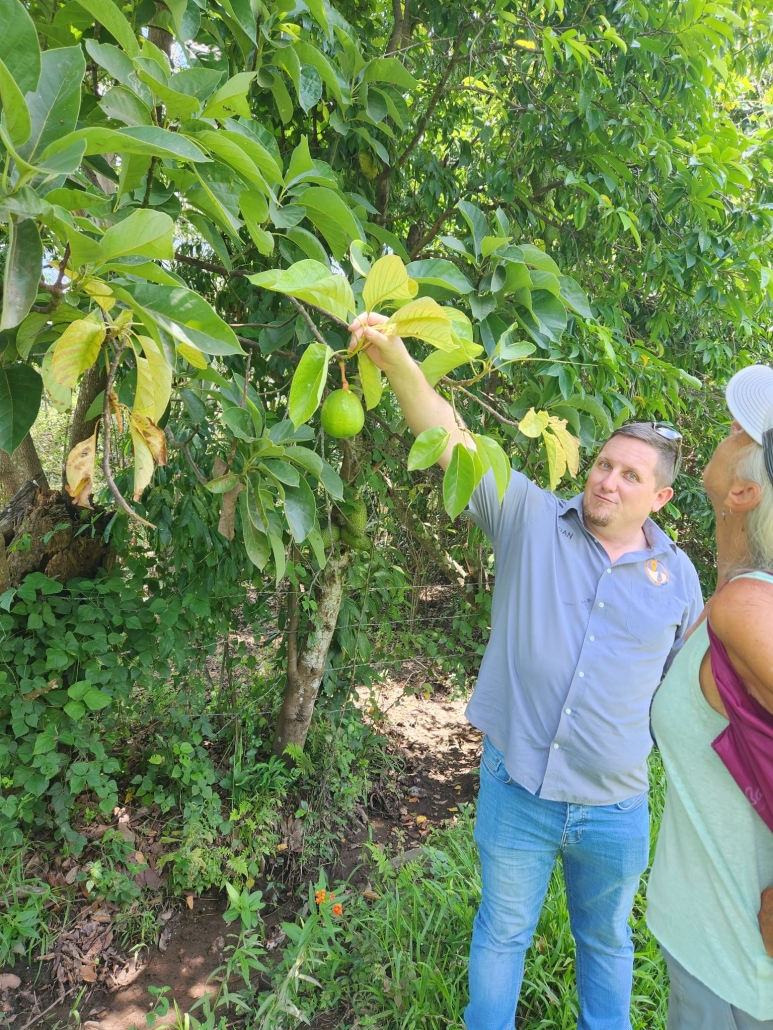
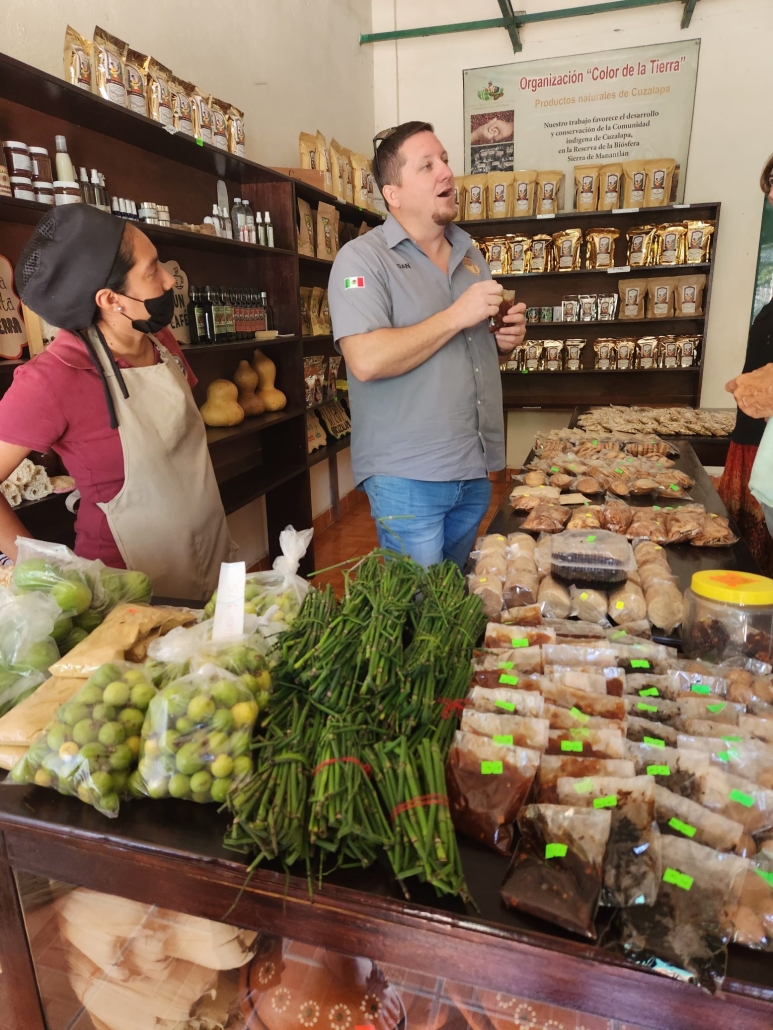
Please note the horsetail for sale. Apparently, it is brewed as a tea and is good for a lot of things, including digestive problems. I spent a huge amount of time trying to get that weed out of my garden!
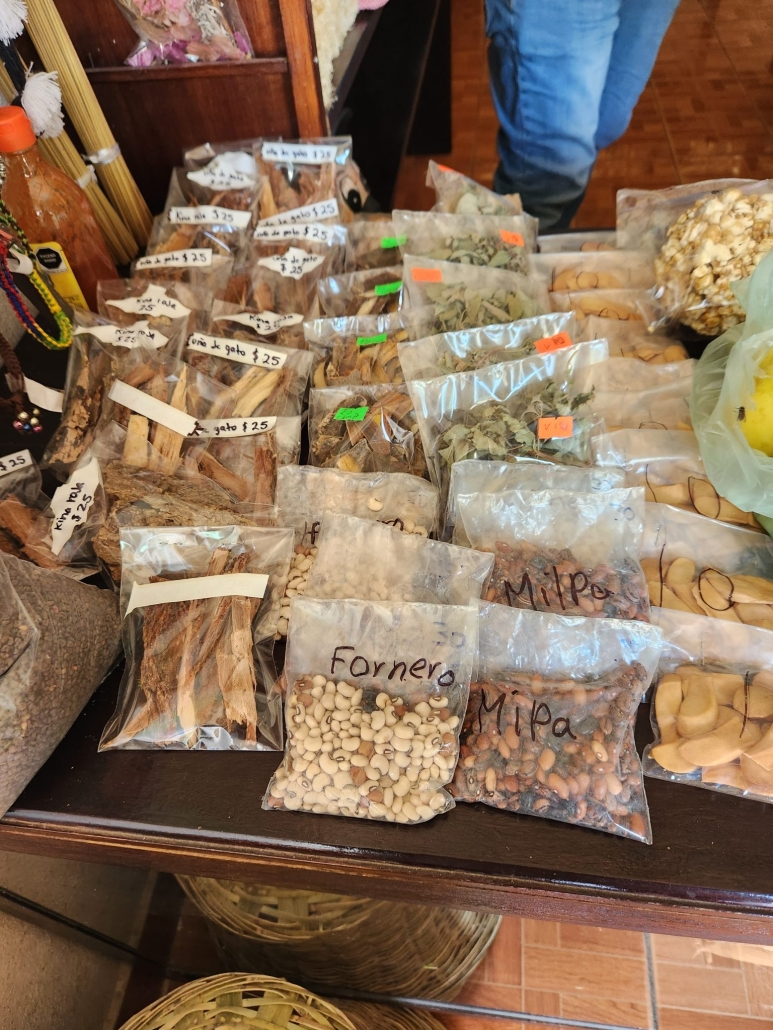
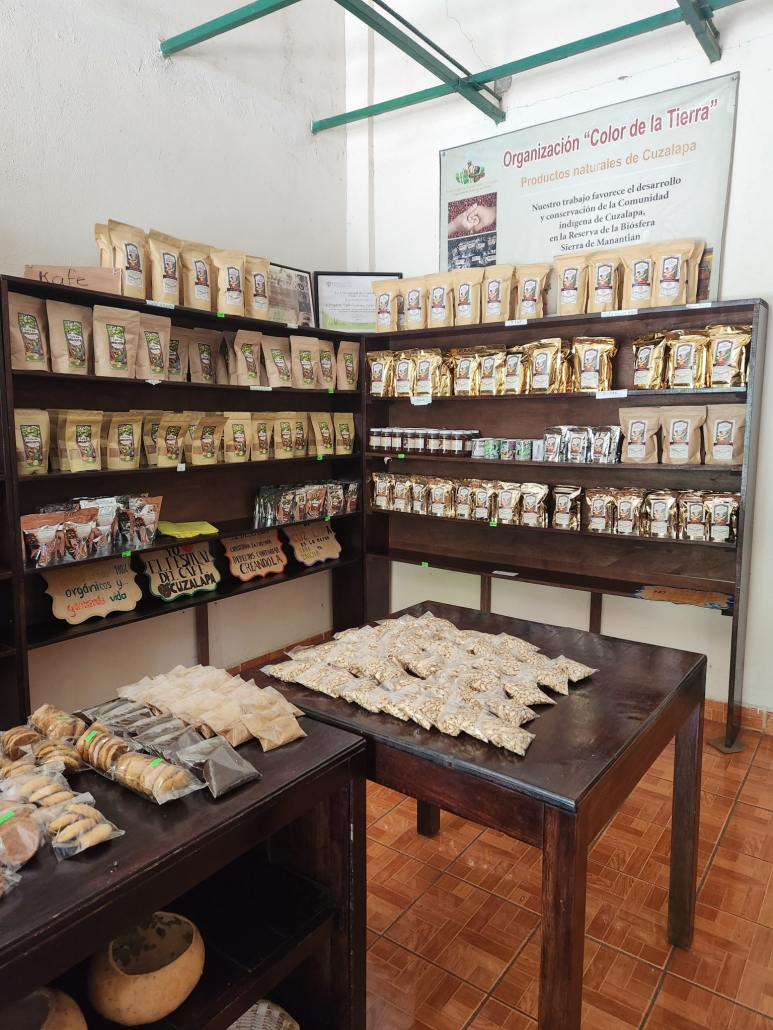
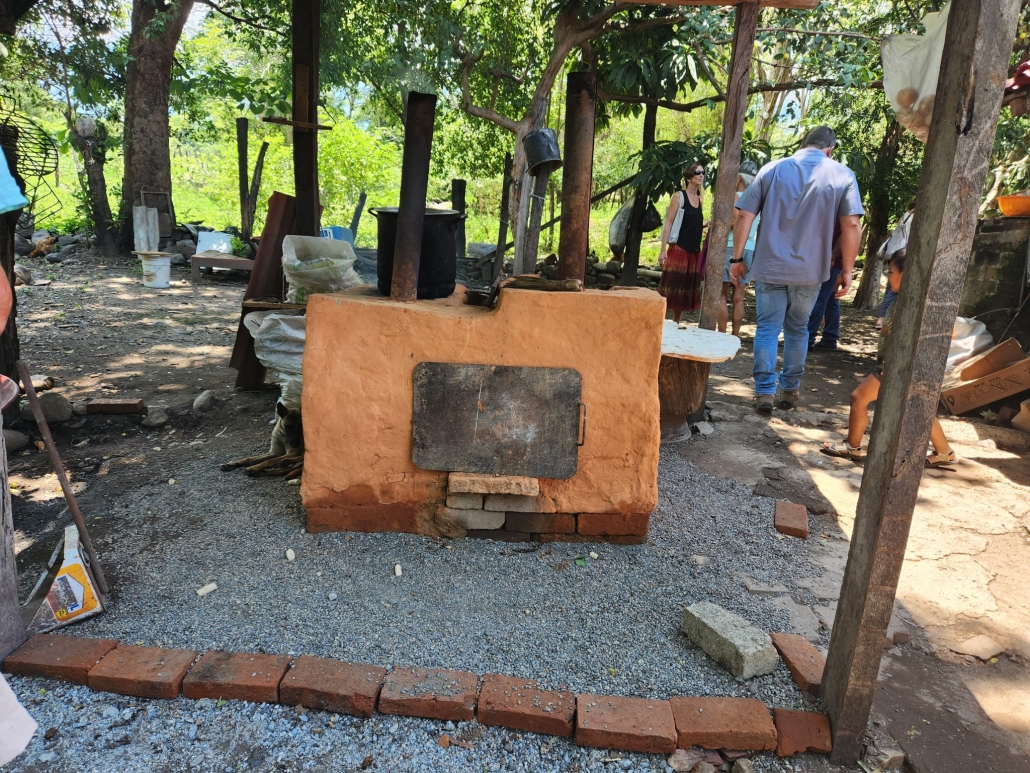
A clay oven used by the owner.
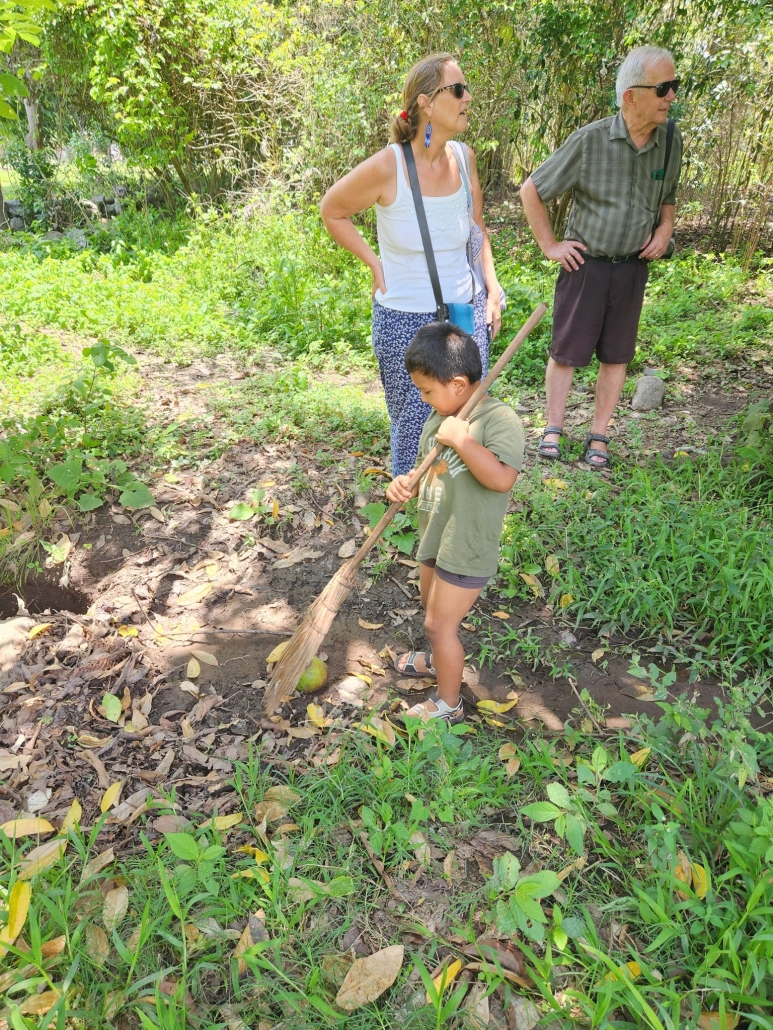
This little guy came running out of his house when he saw us. He grabbed a broom because that was what the guide was using, and this little pretended he was the guide. He would find fallen fruit and share it with us. So cute.
Our landlords’ son had his 3rd birthday party on the road outside of the apartment. In Mexico, it is common to see celebrations on the street.
I am not sure what they used for the pinatas, but they were tough. As you can see from the videos, even the adults had problems.
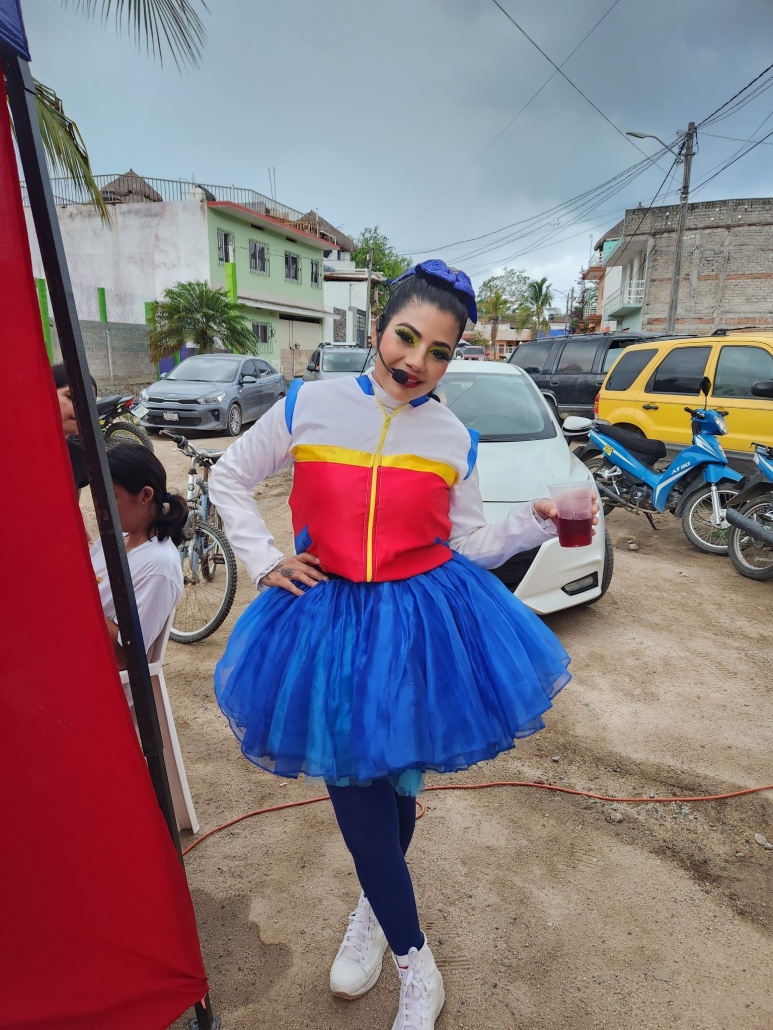
Yes, those are dark clouds, you see. Just as the food was being served, the sky opened up. There was a big scramble to get inside. Within minutes the dirt road was a mud puddle.
Last Friday, we applied for our 3-year temporary residency and got it! All we have to do now is wait for the cards to arrive, which, with any luck, with be in a week. If not, then two weeks. As soon as we get the cards, we will make travel arrangements to go to SLP.
In the meantime, this week, we will apply for our drivers’ licence. I will let you know how that process went.
Until then.
A New Adventure
MEXICO
It has been quite a while since I have written anything for my blog. Of course, the pandemic reared its ugly head and continues to do so on a smaller scale. Some people chose this time to start or finish a project. Me, well, I went into shutdown. No projects, no writing and of course, no travelling. That, for me, was one of the hardest things. Thanks to my friend and writing coach, Kathrin Lake, she gently prodded me to start writing again. I am writing a murder mystery book and I have decided to continue with the blog but in a slightly different fashion. Since I am not sure whether I will be travelling overseas I have decided to focus on Mexico. In particular, our thoughts and final decision on moving to Mexico. We are going to be exploring new areas to hopefully find one where we would like to spend the majority of our time. So, let us begin!
To live or stay in Mexico longer than the usual 6 months, we needed to apply for a Temporary Residency in Mexico from the country you are a citizen of. The process, if you are prepared with all the required paperwork only takes about 2 ½ hours and that includes going for lunch while waiting for the approval. The cost was minimal, $62.00 Cdn. It will vary slightly from month to month. You do have to qualify financially but if my readers want, I can go into that in another blog. We were approved for the first part. Now we must return to Mexico within 6 months of being approved to finalize the paperwork. Once that is done, we will receive a Temporary Residency card which will allow us to remain in the country for up to 4 years. After that, we can apply for a Permanent Residency. At this point, there is no financial requirements for the permanent one.
As some of you may know, we stay in Melaque ‘for the winter’ which is on the Pacific coast, 4 hours south of Puerto Vallarta. Why not stay there year-round? We think it would be too hot and humid. Also, they tend to have hurricanes and tremendous amounts of rain which brings on flooding. So, we have decided to try inland. We have not decided on our final choices yet but here are a few that we are considering.
Jocotepec
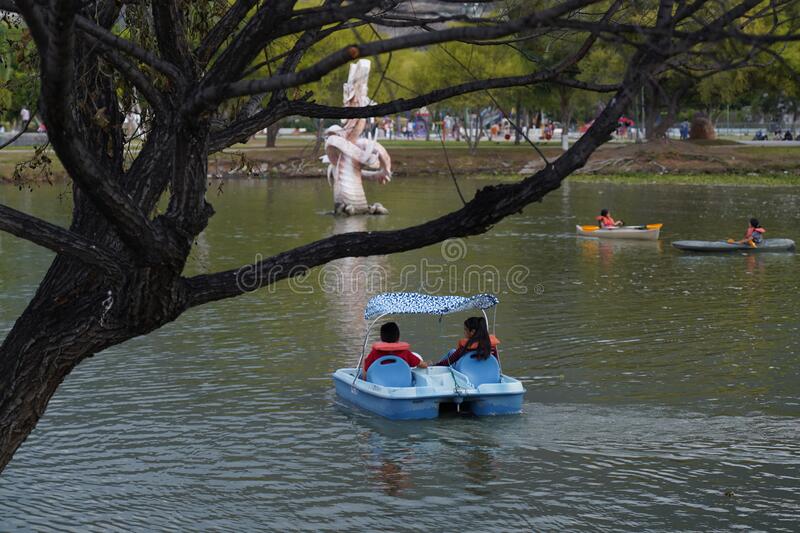
Morelia
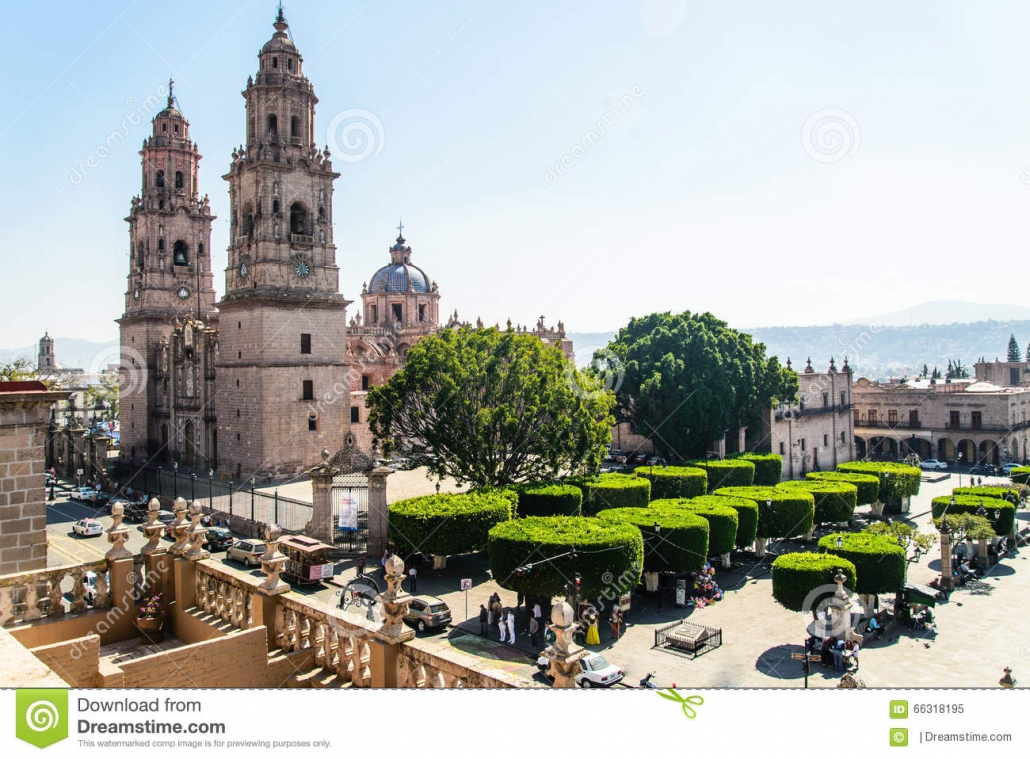
San Louis Potosi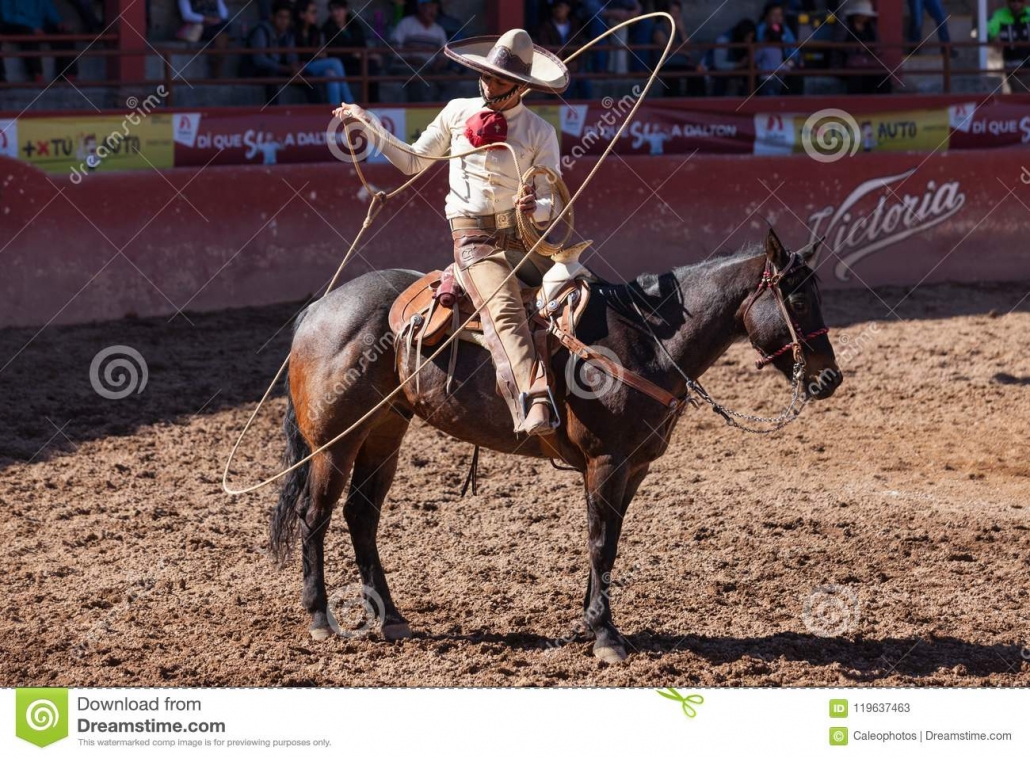
Aguascalientes
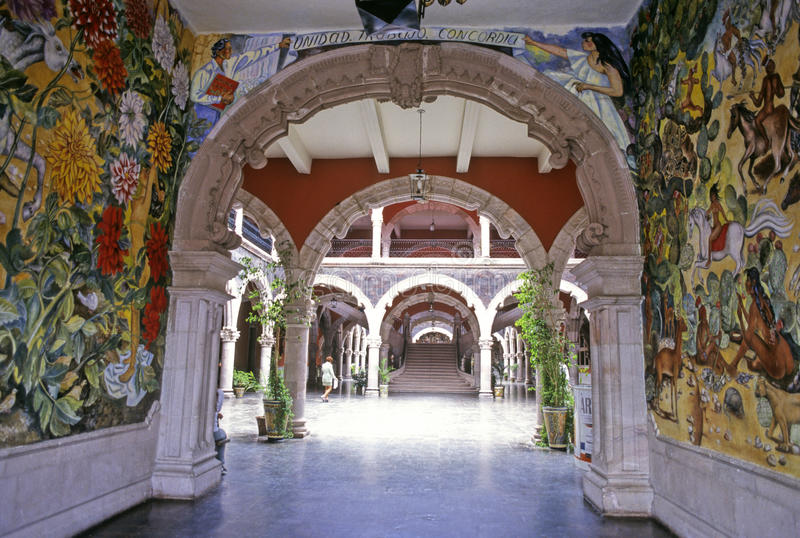
Comala
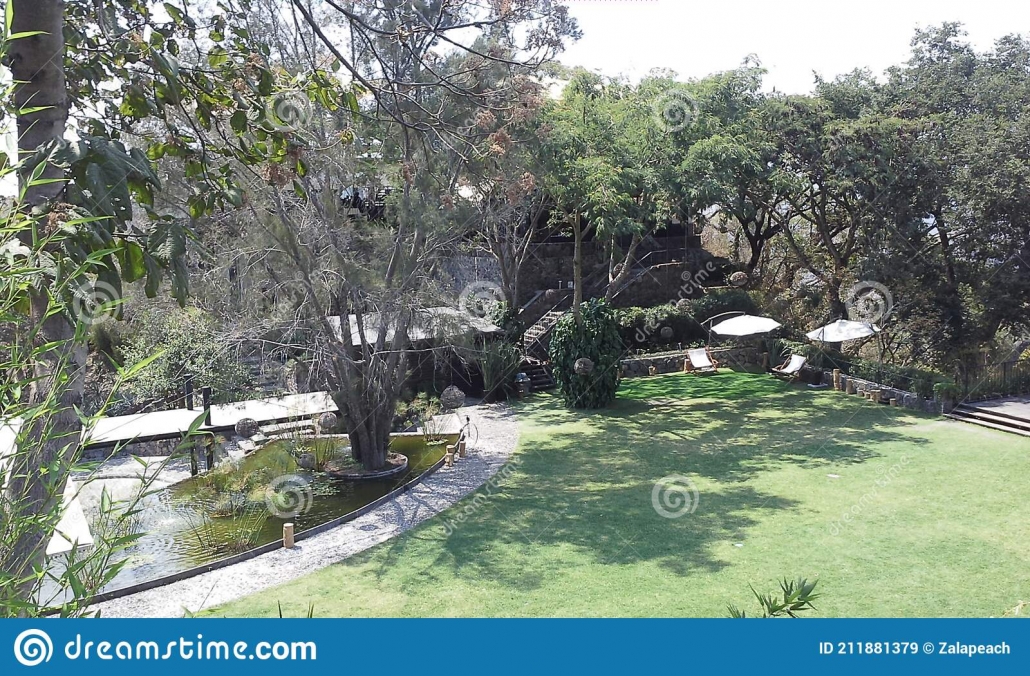
Do any of you have more ideas?
Colima, Mexico Horse Parade
“Travel makes you realize that no matter how much you know, there’s always more to learn.”
Every year Mex-Eco Tours organizes a trip to Colima to see the annual Fiestas Charrotaurinas, held in honour of San Felipe de Jesus. This tour is so popular that it must be booked one year, in advance.
I have always loved horses. Even as a child I collected ceramic ones. Later in life, I owned 2 horses. One I had never ridden and the other I rode many times until she threw me and I broke my wrist. Still, I have maintained my love and awe for them. This trip was like a dream for me.
Our group started with a tour of La Petatera, a handmade wooden bullring, which is constructed and then taken down every year for fiestas, horse shows and bullfighting. We were greeted by Mayor Felipe Cruz Calvario and a delegation, including Eulalia Villalvazo and Oscar Gaitan Cabrera from the Colima tourism. We felt honoured. They are very passionate about their city and, as I was to discover, rightfully so.
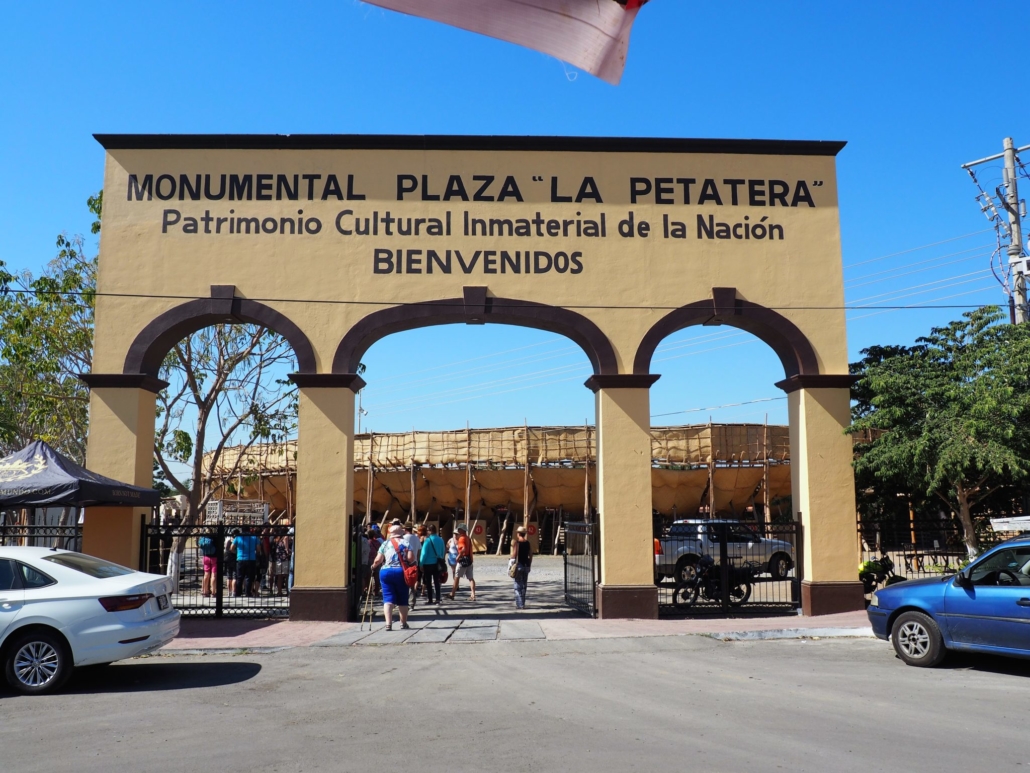
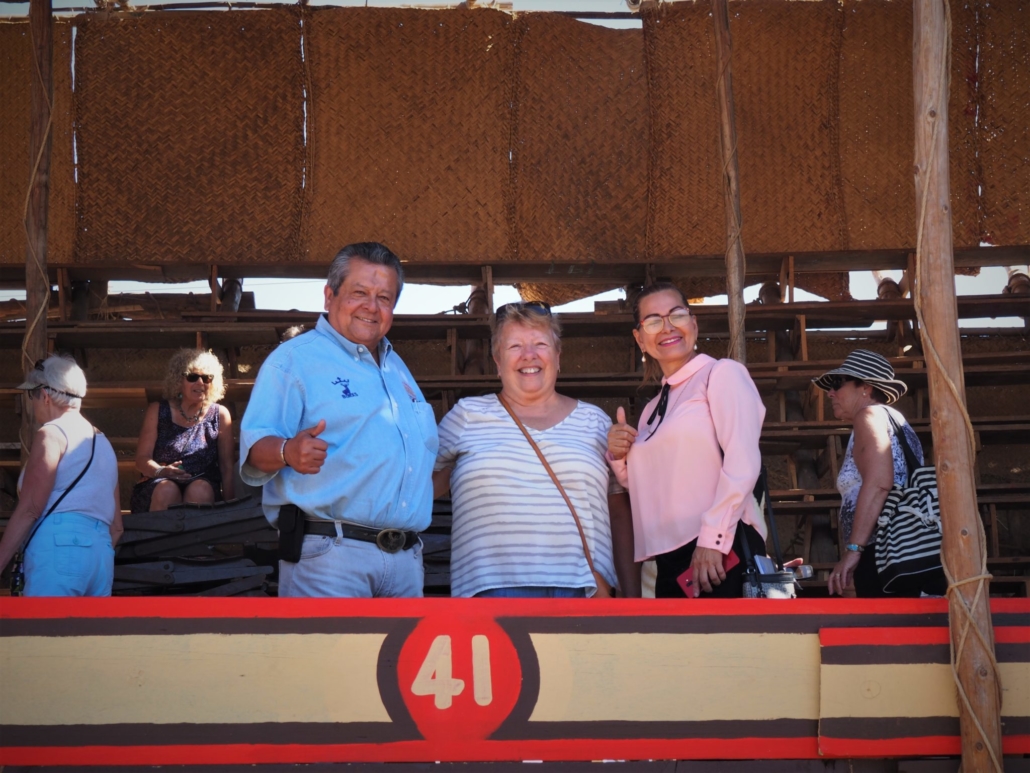
To contact Oscar Gaitlan Cabrera, Promoción Divulgación: buras52@hotmail.com
To contact Eulalia Villalvazo, Tourism Colima: tourismovilladealvarez1821@gmail.com
The bullring was first built in 1857. At one time it was two stories high, but in 1942 there was an earthquake, and after that, it was decided to make it a one-story building. The same 63 families have been building the bullring for the past 175 years, passing down the knowledge of how it is constructed to the next generation. If the family cannot do part of the construction, they are allowed to hire someone to do it. The builders use no nails or any “modern” methods. The wooden structure is covered with mats made with palm leaves. Forty people take 30 – 45 days to complete construction. It is all measured and laid out, without the use of a measuring tape, but by one man using a special stick. Two years ago this 84-year-old was supposed to hand over this stick to his son, but apparently, he was not ready yet to relinquish control. There are no blueprints for this building. It is all in the head. Each person that is involved knows exactly what they are doing. That includes the bullring and all the corrals outside. It takes one week to take down. The wood, mats and other material are kept year after year only to be replaced if damaged. It is the responsibility of each family to store their wood and materials. The bullring is divided into 70 parts, and there is one share per family. The remaining part is owned by the government and is decided by vote as to which family will get that share. 120 families are vying for that part. Each share brings in money from the sale of tickets. Whatever tickets are sold for each section goes to the family who owns it. The bullring holds 7000 people.
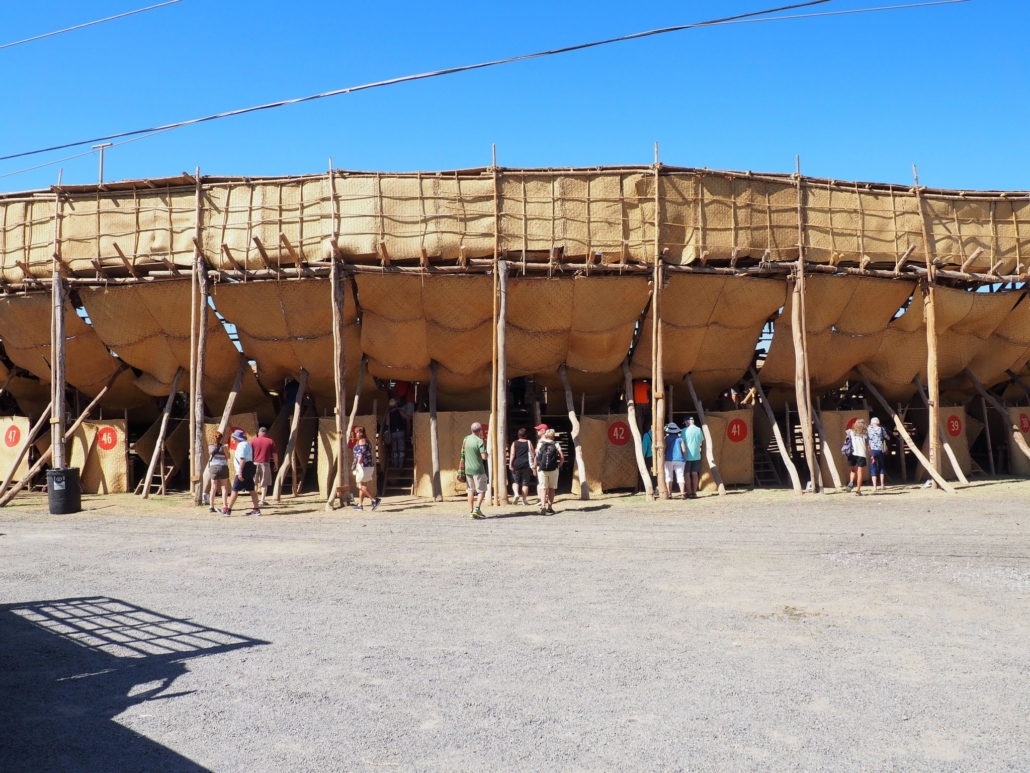
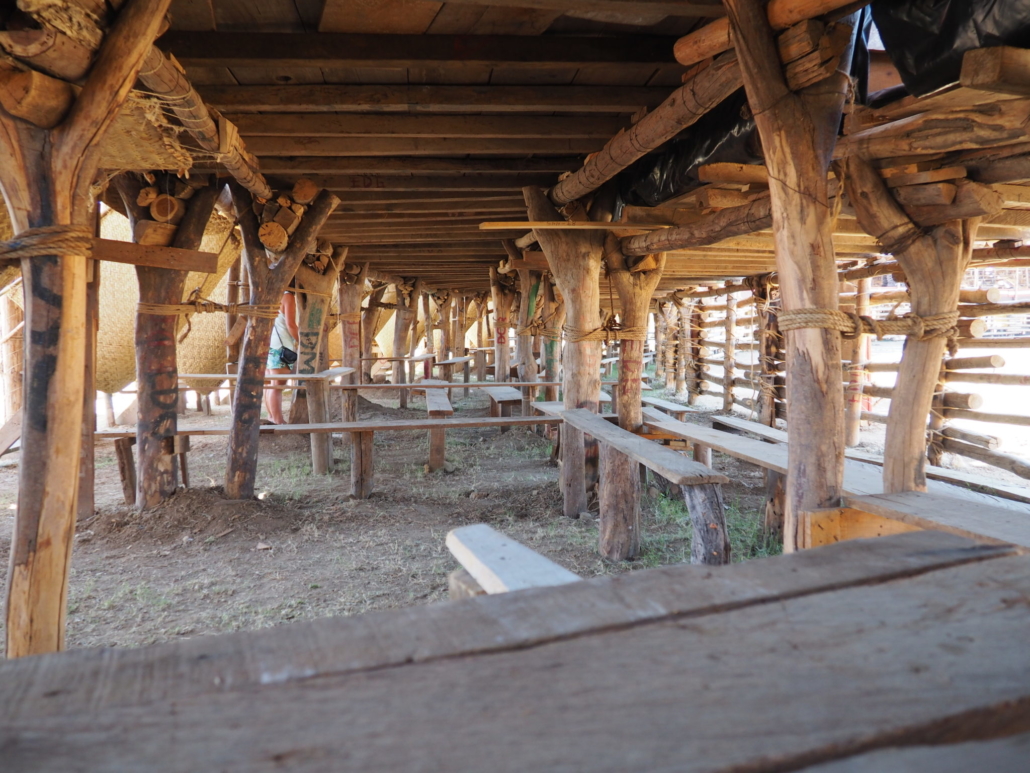
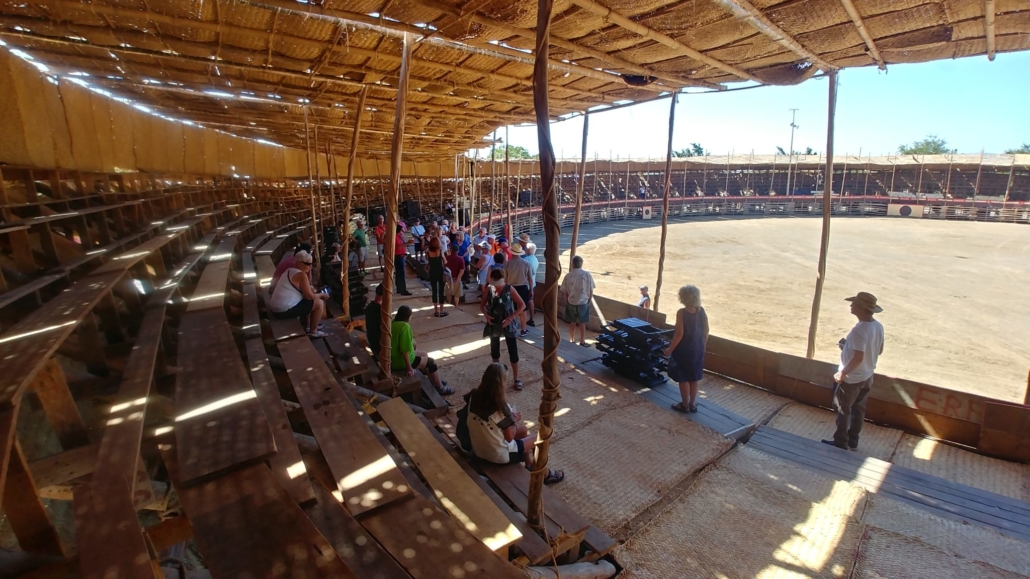
The bullfight lasts for a few days and one morning is set aside for inexperienced riders to mount the less spirited bulls. Don’t think I will be doing that.
The tour of the bullring and learning of its history, as well as the story behind the patron Saint San Felipe de Jesus, was fascinating and informative. There is so much history.
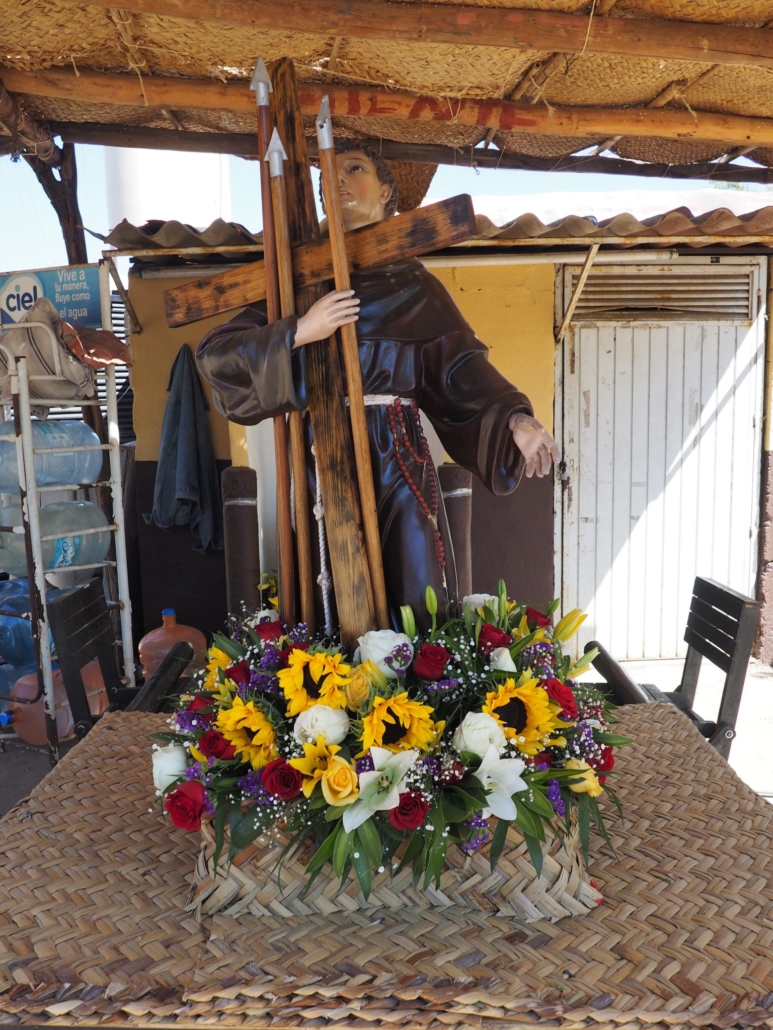
We spent the rest of the day exploring some of Colima.
The tour company had reserved rooms at the Best Western Plus Hotel. The accommodations were very nice and the staff friendly and helpful. The hotel had set up tables for our group directly in front of the parade route. We could literally reach out and touch some of the horses.
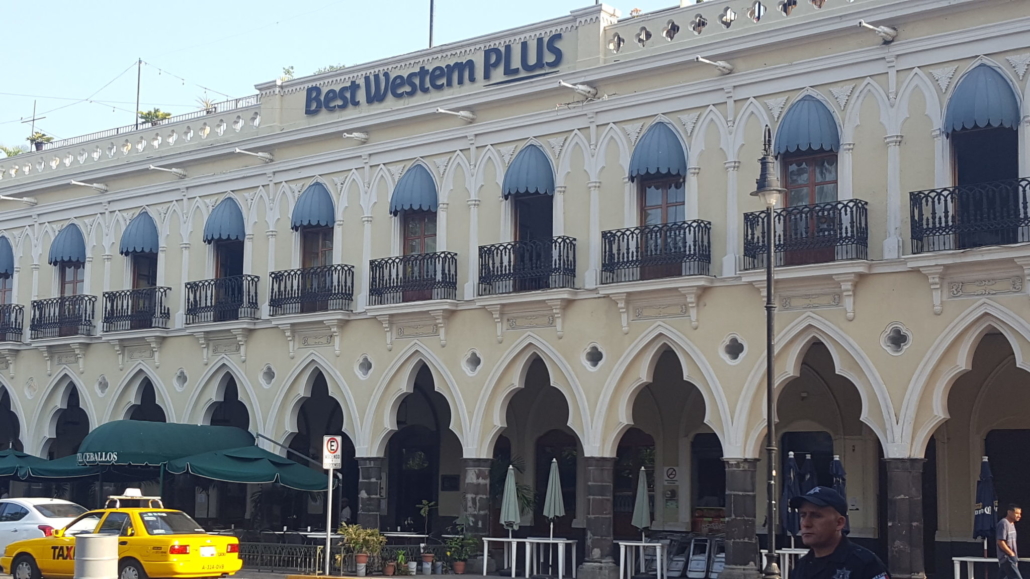
Best Western Plus: https://www.bestwestern.com/en_US/book/hotels-in-colima/best-western-plus-hotel-ceballos/propertyCode.70146.html
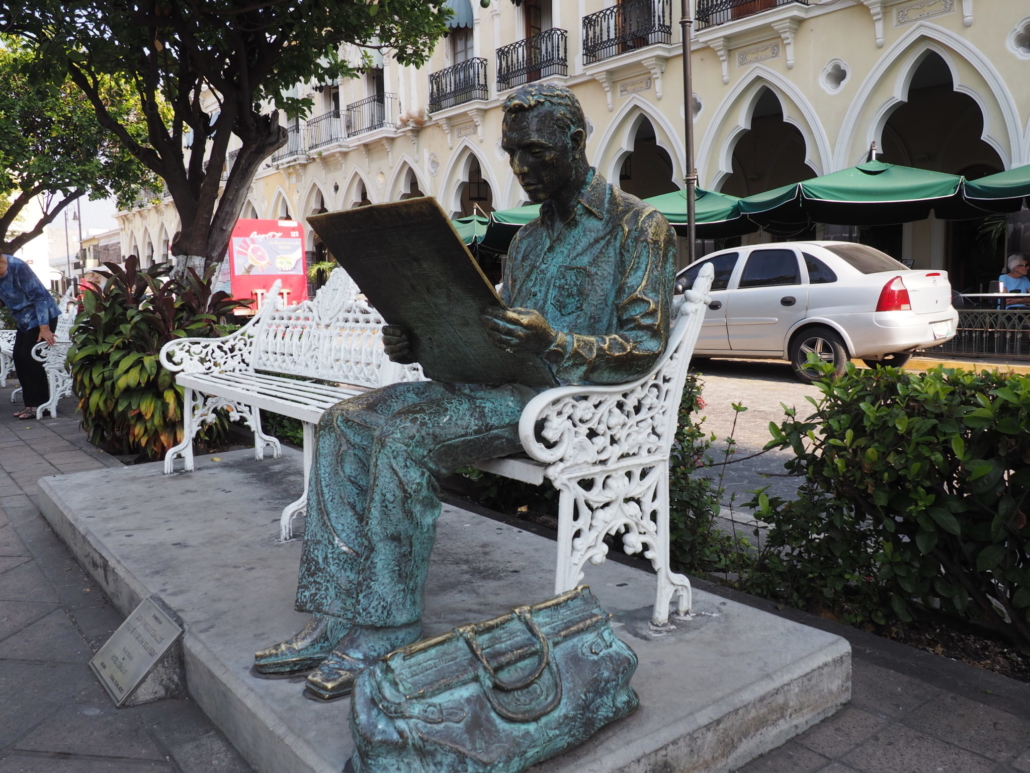
There were between 2500 and 2900 horses. The number is actually irrelevant as there were so many horses that it took three to four hours for the parade to finish. The parade started a few blocks from where we were and continued for several kilometres until it reached the bullring. Not only were there horses but several floats carrying live bands playing. The bands were very loud but entertaining. I felt sorry for the horses that were directly behind those floats. There were also large puppet-like figures and of course the shrine to Saint San Felipe de Jesus. Many of the horses did fancy footwork. Most of the riders gave their horses a break from the intense footwork, but a few did not. When they passed by us, those horses were already frothing, and they still had a few kilometres to go.
All in all, it was a fascinating event to see.
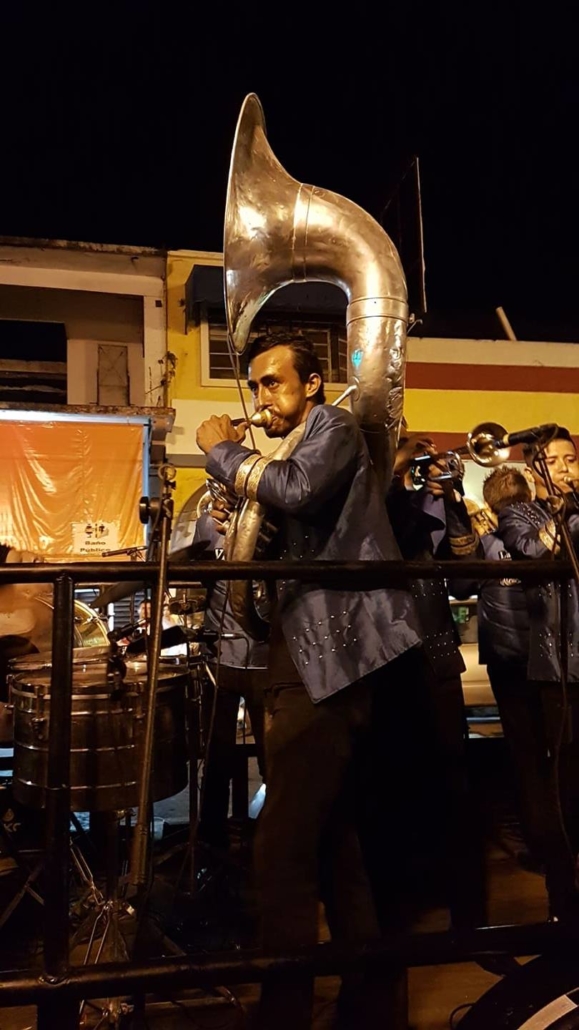
photo credit Lucia McCann
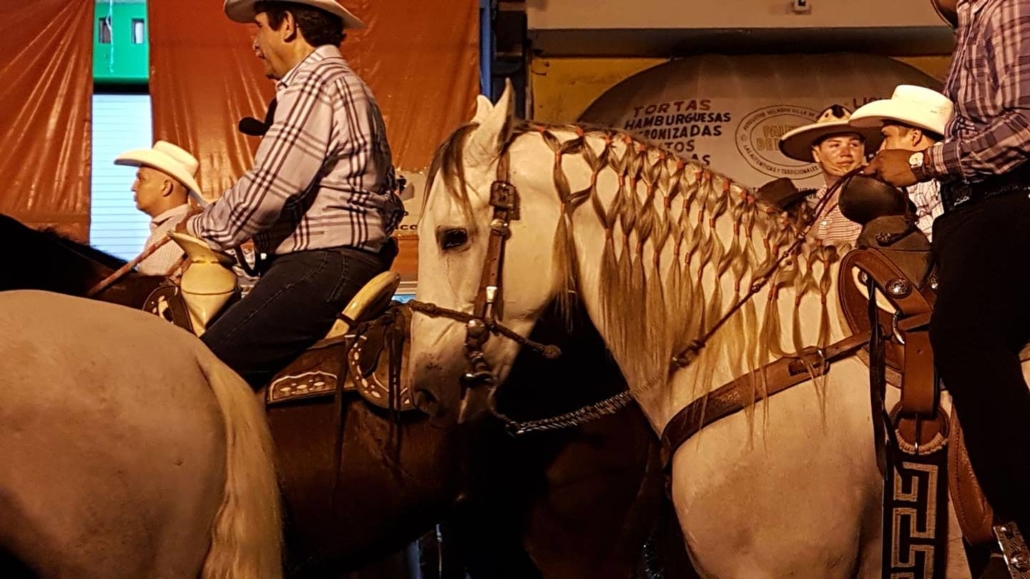
photo credit Lucia McCann
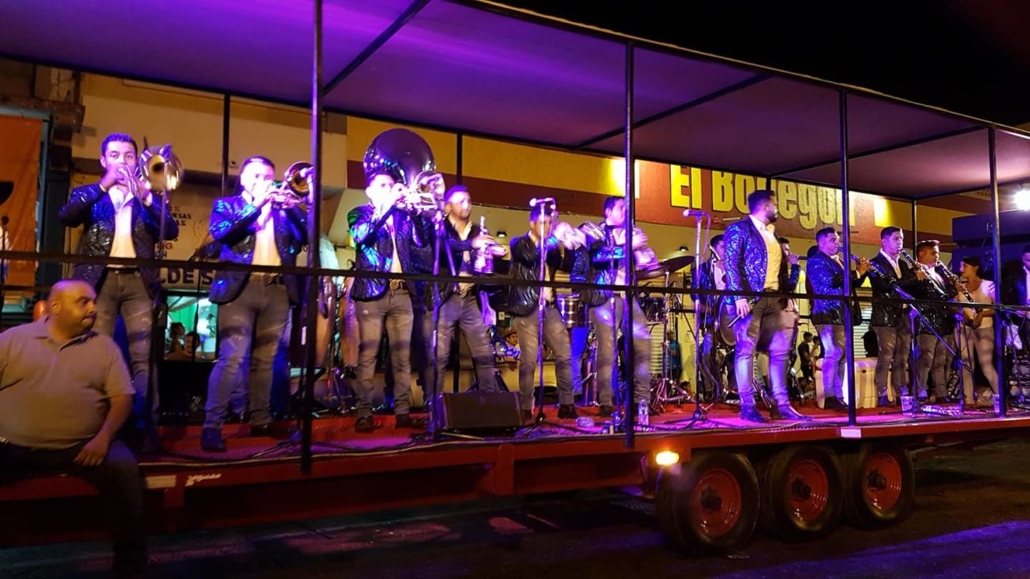
Photo credit Lucia McCann
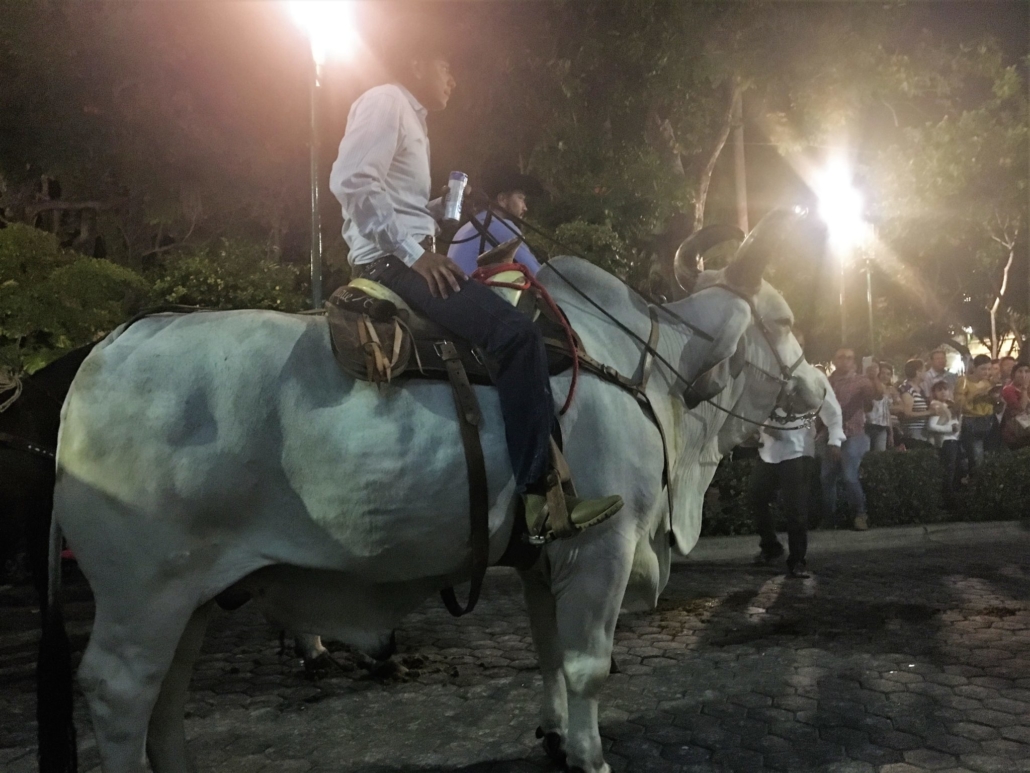
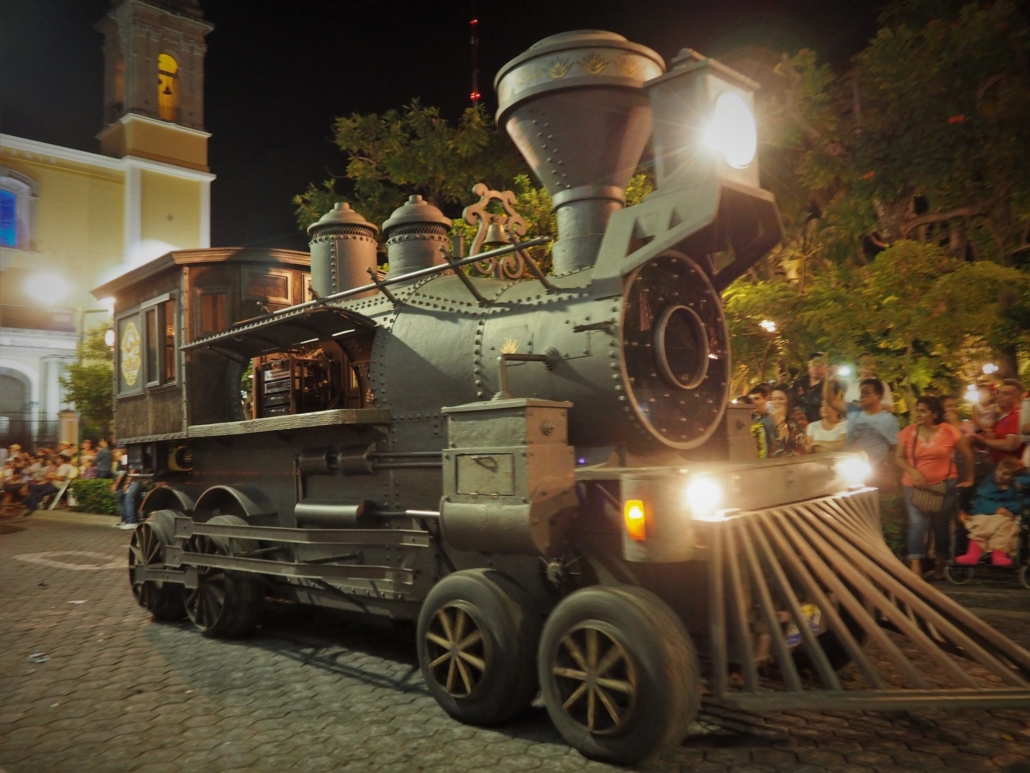
Two short videos to give you an idea of what it was like.
http://www.youtube.com/watch?v=LQqdVTIo5Jo
and https://youtu.be/pKsoZFtv7yg
As part of the tour, we drove to Comala, a small town close to Colima.
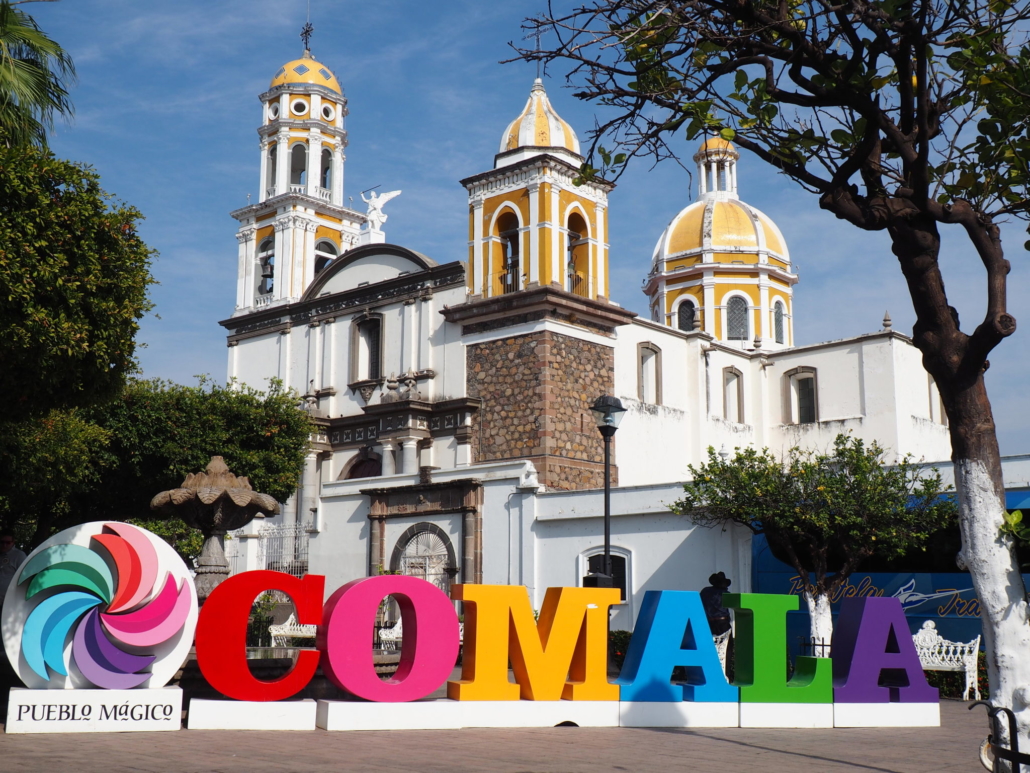
We visited the Ex-Hacienda de Nogueras. In the 18th century, it was a renowned sugar company founded by the Spaniard Juan de Noguera. Today, it is part of the University of Colima. Its facilities were remodelled to become a Study Center, Eco Park and the Alejandro Rangel University Museum which exhibits works of the famous artist, Alejandro Rangel Hidalgo. The Eco Park is used for the preservation of flora and fauna research in the region. You will find medicinal plants, fruit trees and composting. There is also an area where the use of alternative energy is shown and where they have workshops on recycling and environmental training. In 2003, Comala won the best magic town in Mexico award.
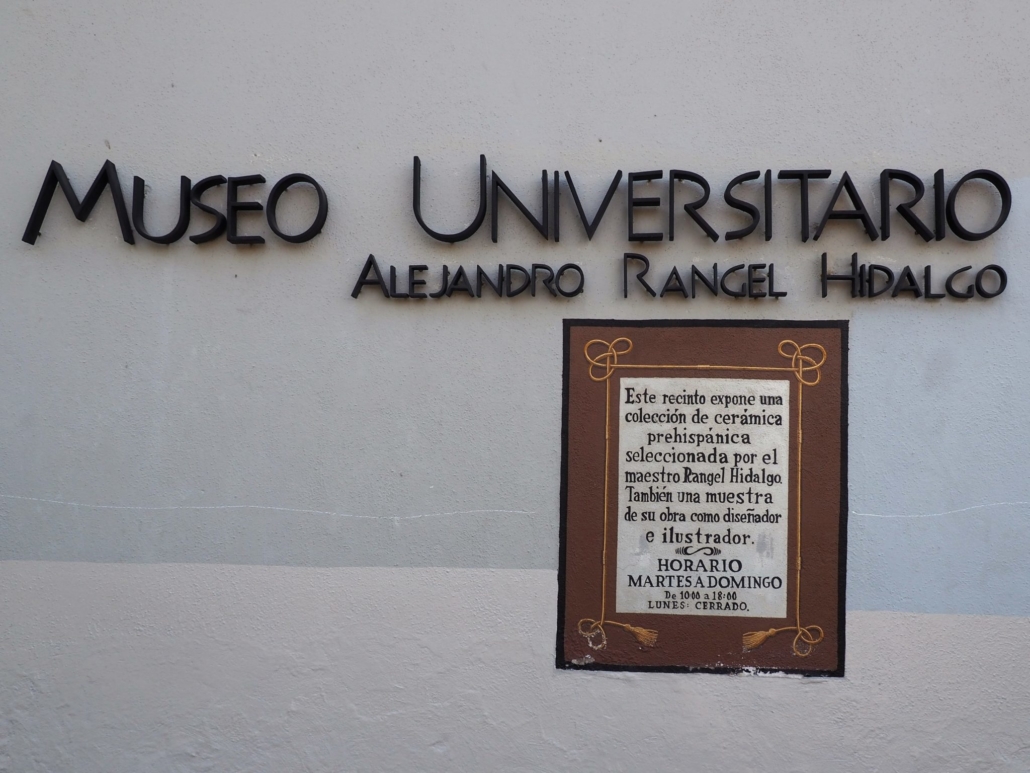
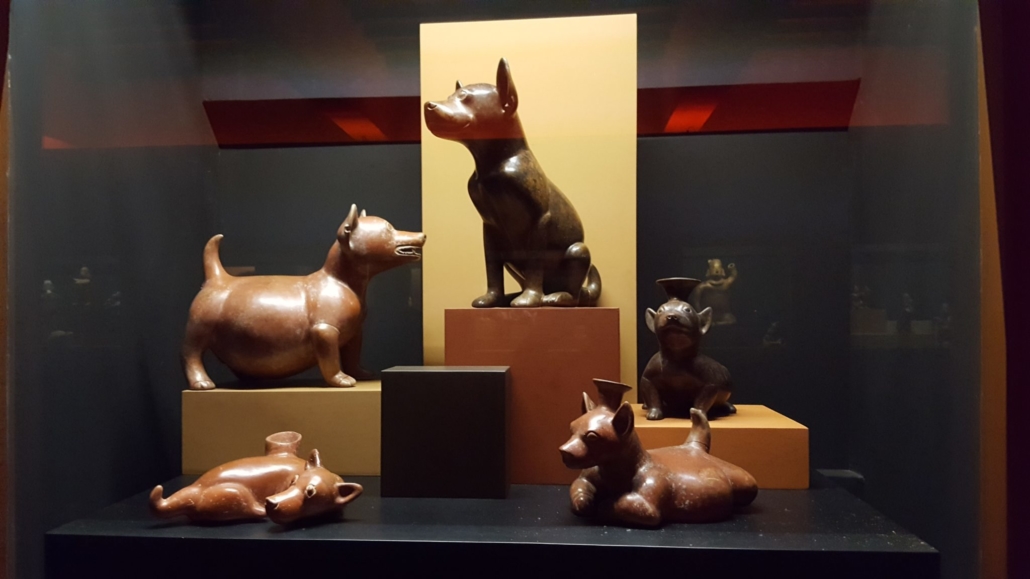
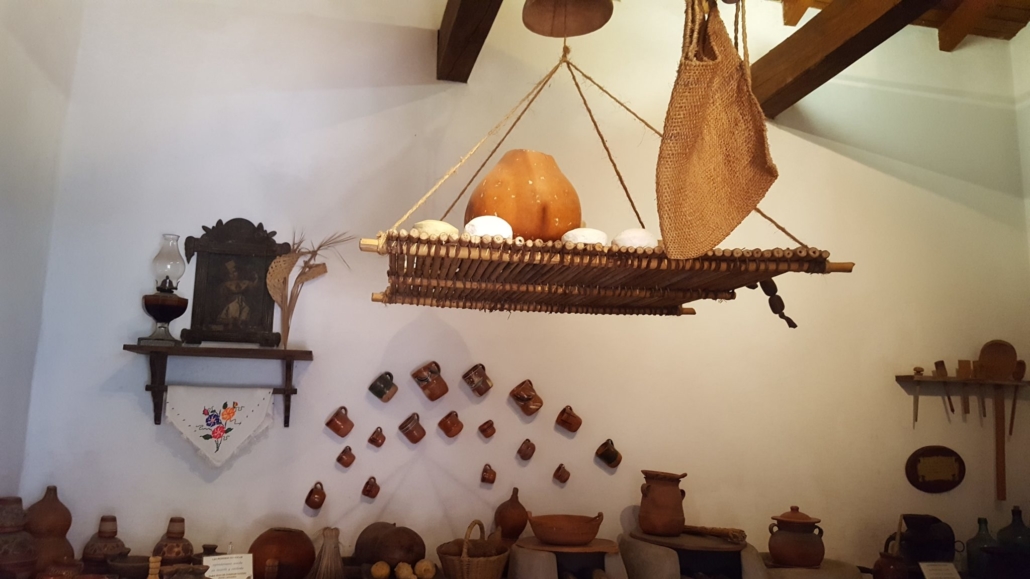
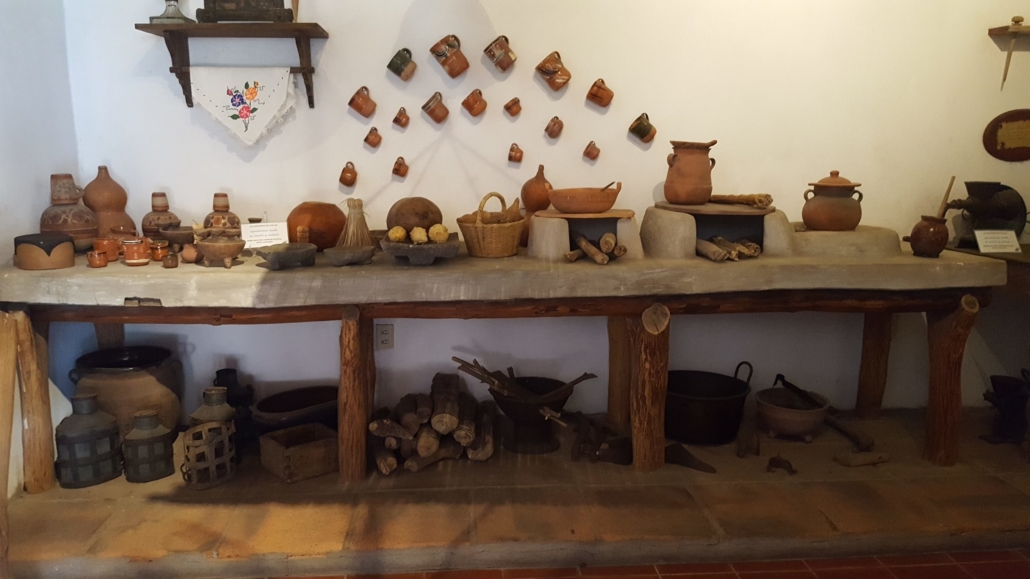
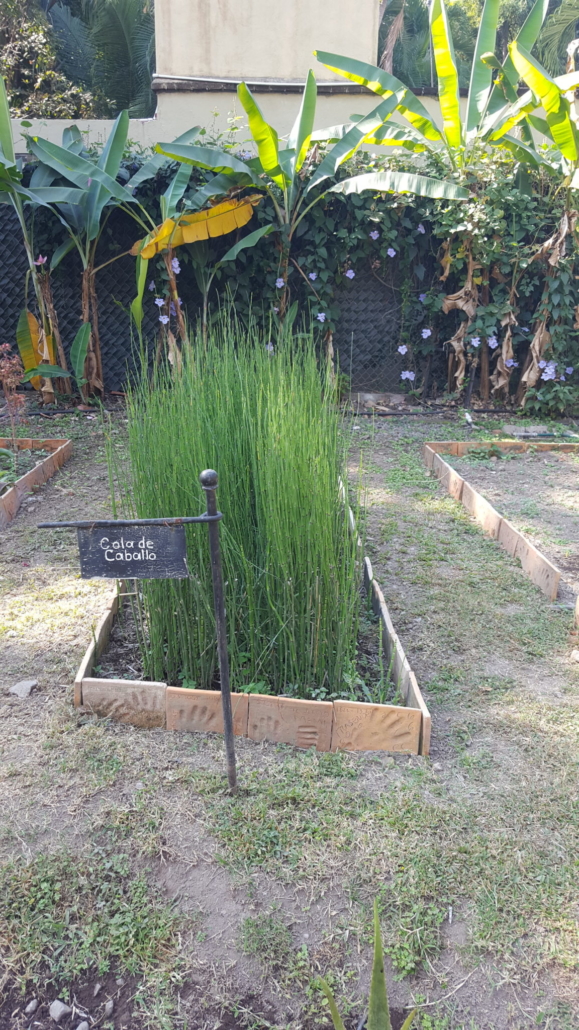
Horsetail that we consider is a weed
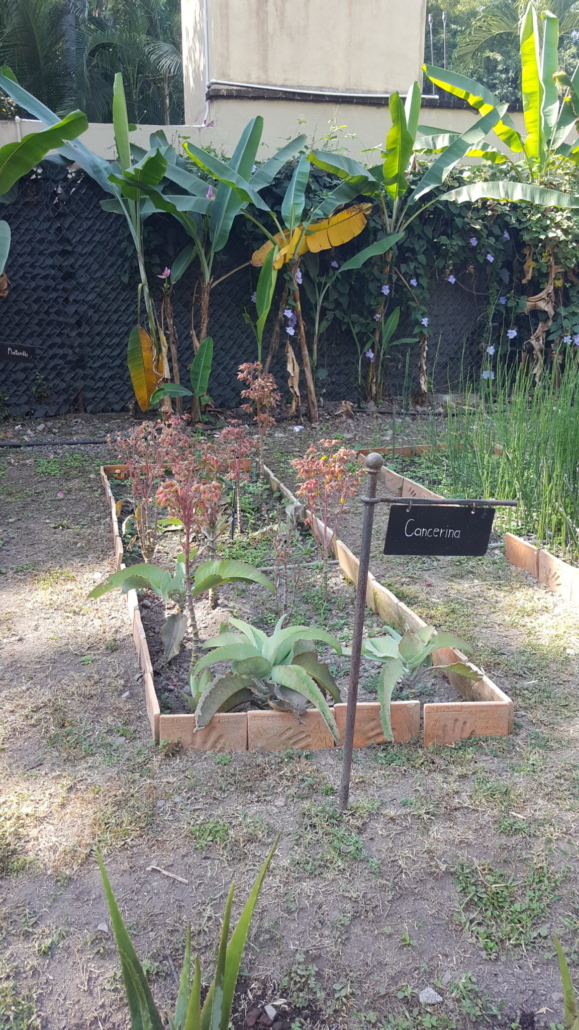
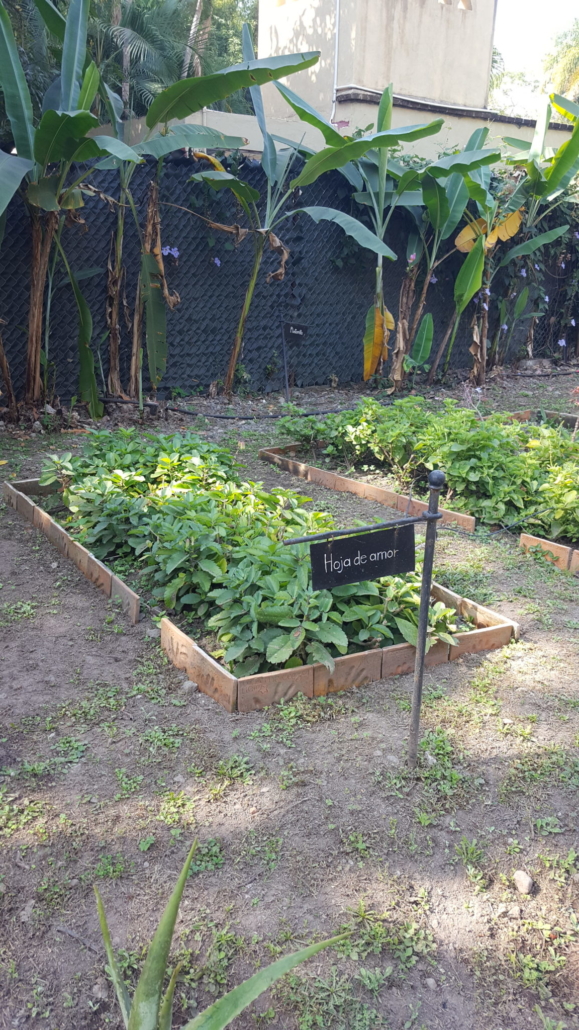
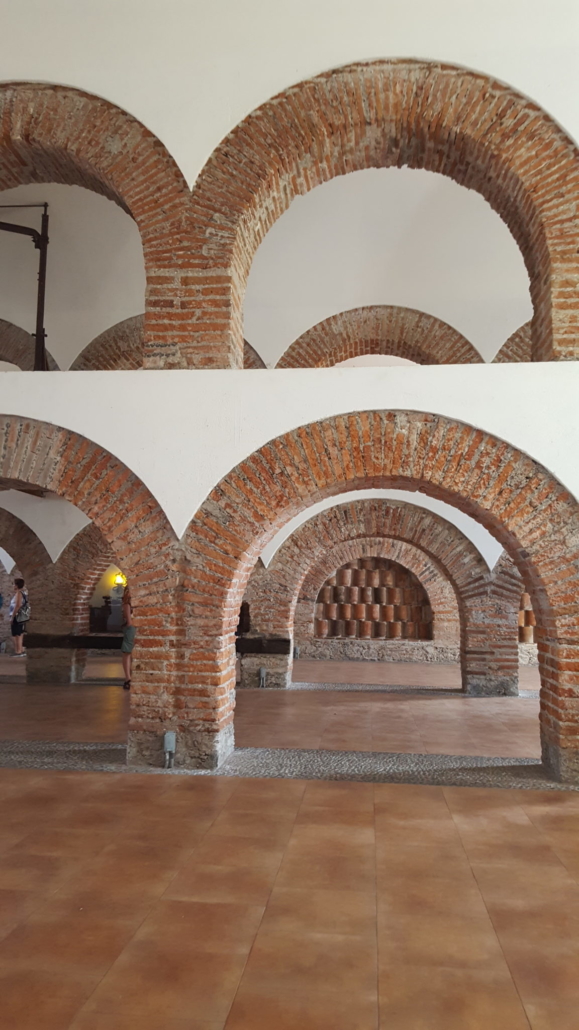
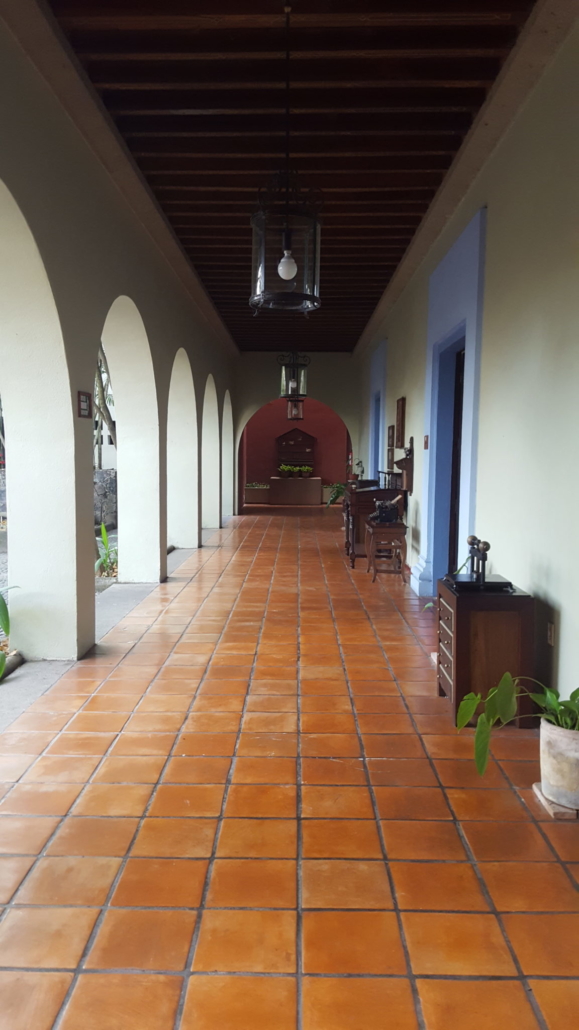
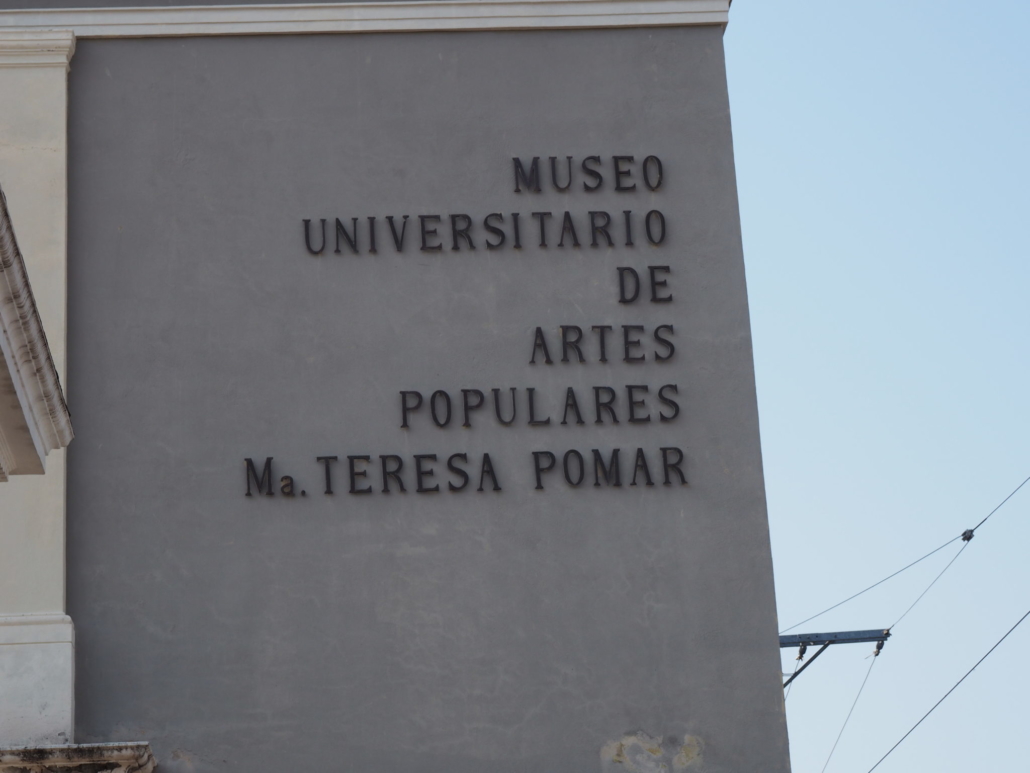
We also went to the University of Arts where we were fortunate enough to see some very talented artists at work.
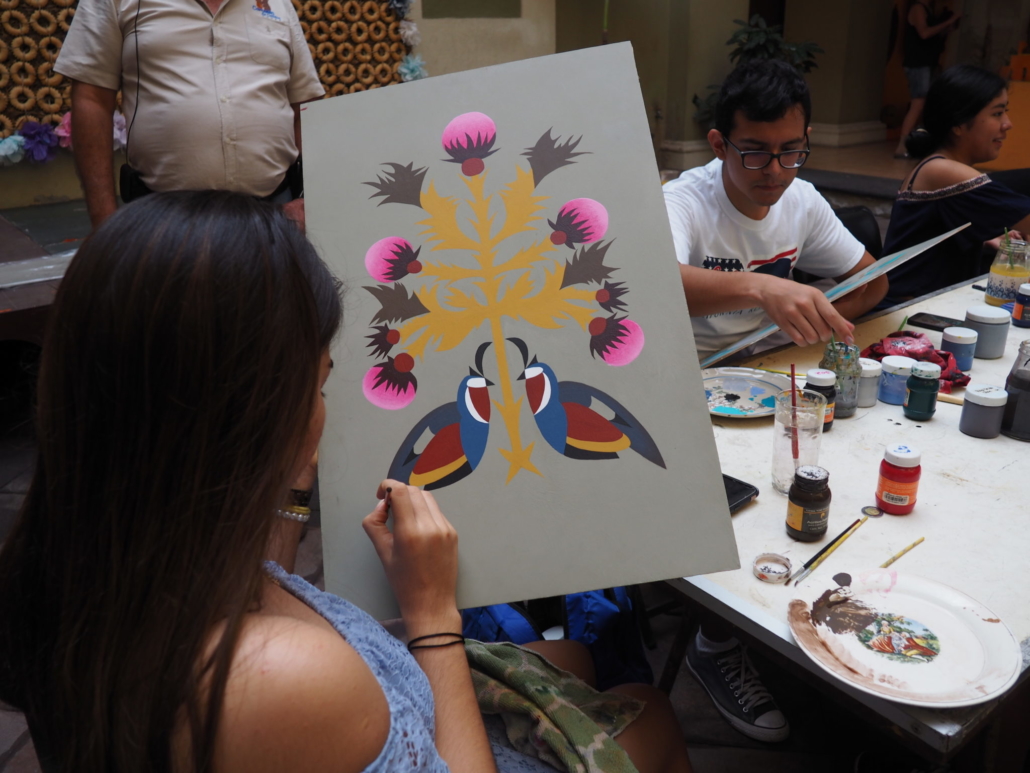
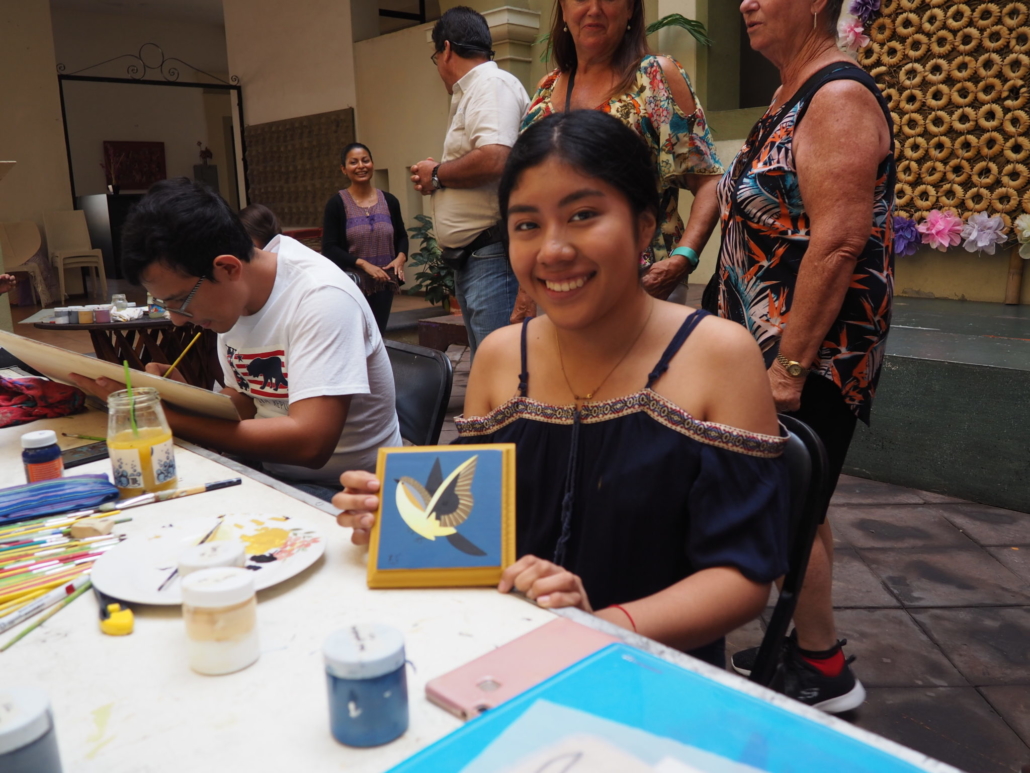
In a small village, Suchitlan, near Comala we went to the home and workshop of Gorgonio Candelario Castro, son of the renowned carver Herminio Candelario Dolores who passed away a few years ago. I had visited them several years ago when his father was still alive. I was pleasantly surprised that he remembered me. Gorgonio maintains the traditions of his people, the land and the spirits which inhabit it. As his father did, he specializes in the masks used in the traditional dances. I feel fortunate to have one of his masks.
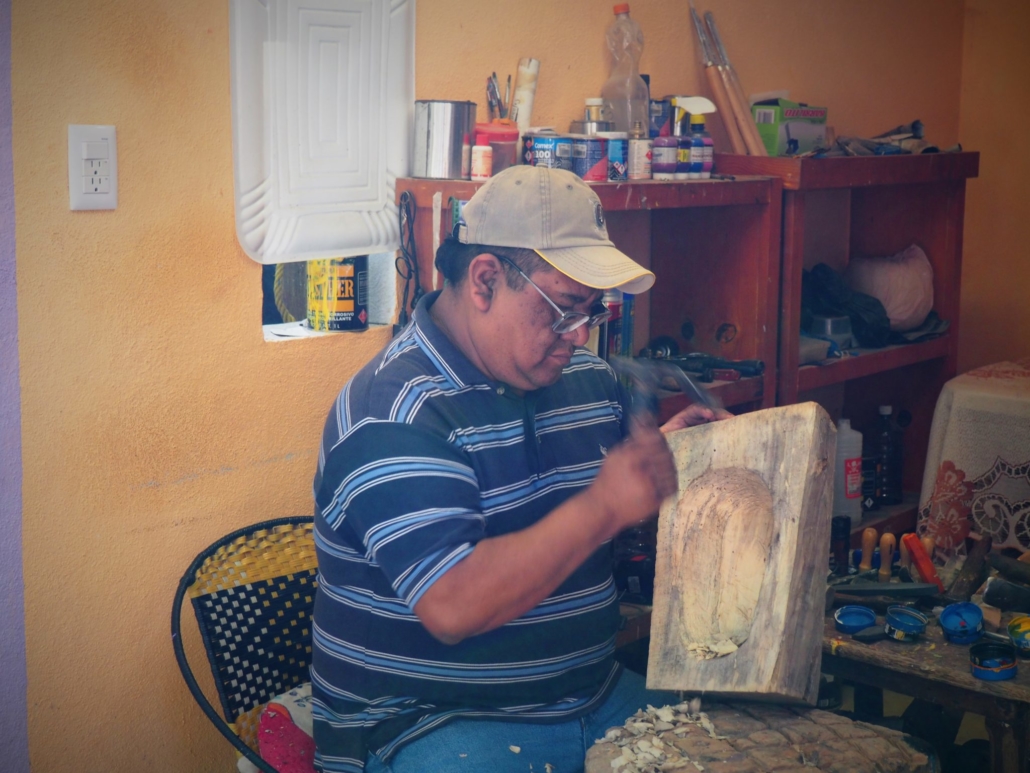
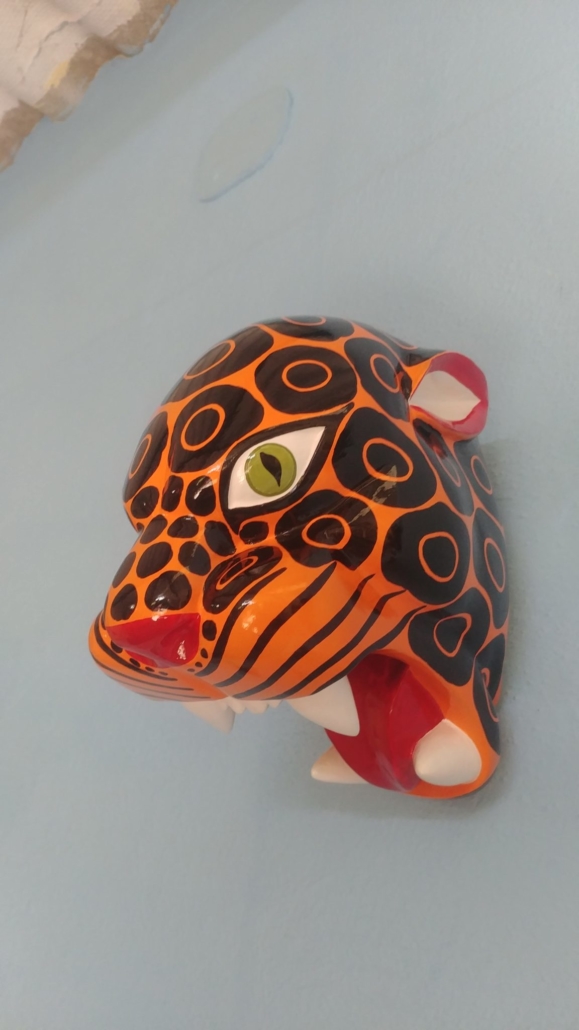
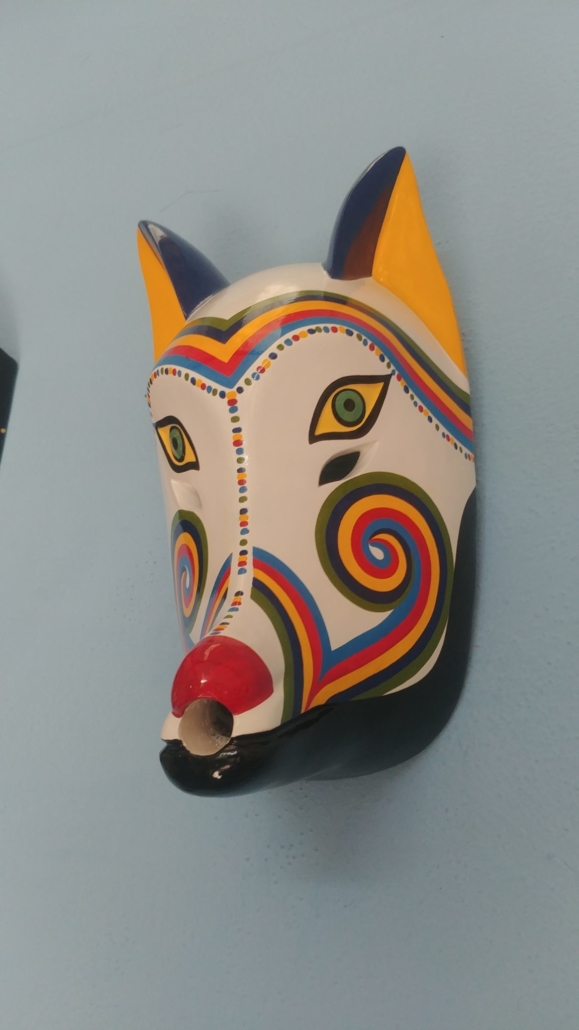
Next on our tour was to a coffee plantation where we learned about the process of making coffee. The coffee beans are grown organically, and the claim is that the mild ash falling from the active volcano provides nutrients to the soil which in turn, makes a better coffee bean. We finished with a wonderful latte and the opportunity to purchase their coffee.
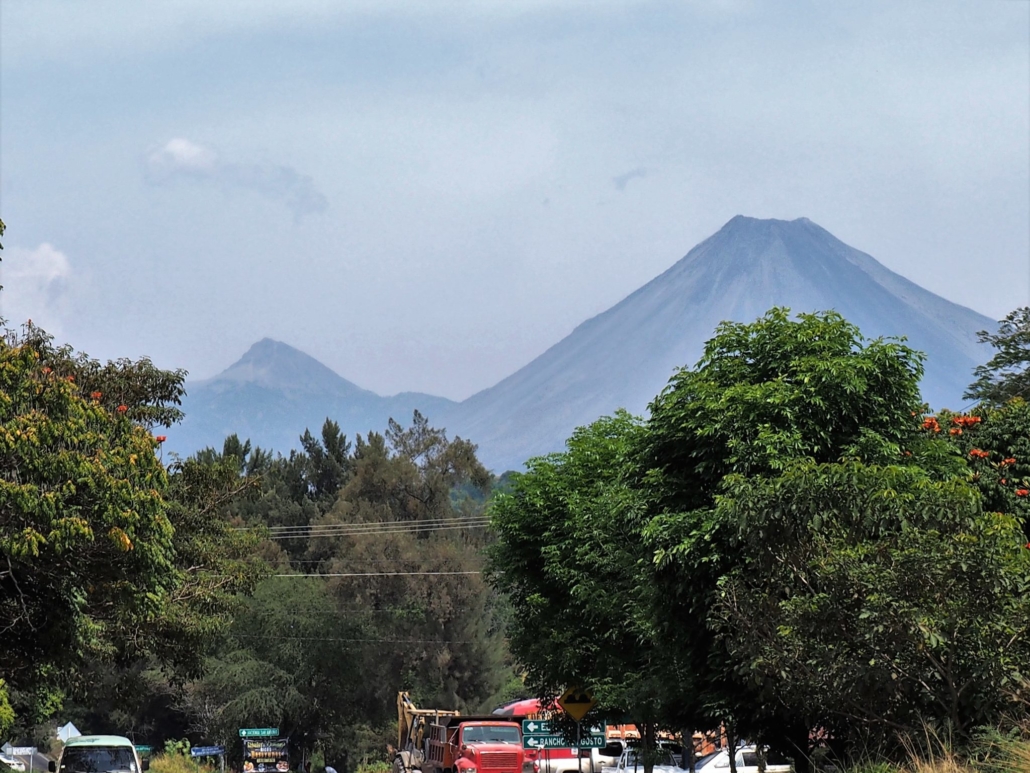
Our last stop was to “Ron Clasica,” a rum distillery. The distillery was conceived by the owners who were looking to start something unique. They felt that they could make a good rum because of the sugar cane in the area. They hired a consultant from Cuba to see if the sugar cane was of good enough quality to make a superior rum. The consultant did not think that it would be good enough. He was pleasantly surprised to find that it was. He eventually ended up working for the family. After a tour of the facility and the sugar cane fields, we were given the ingredients to make mojitos. After that, were served martinis made with tamarind, lime and rum. Some good!
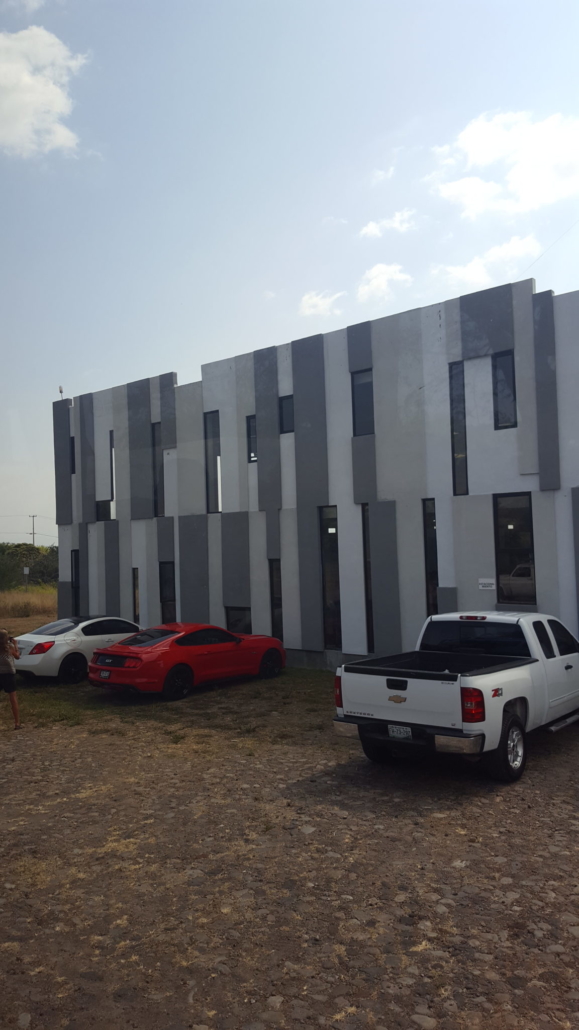
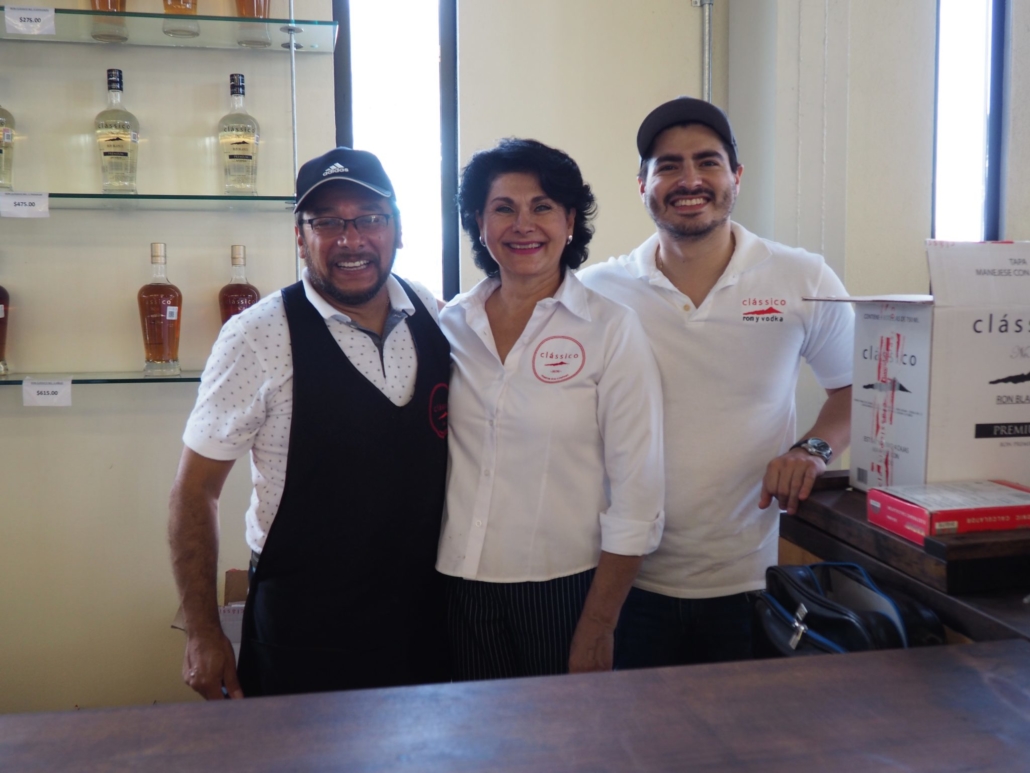
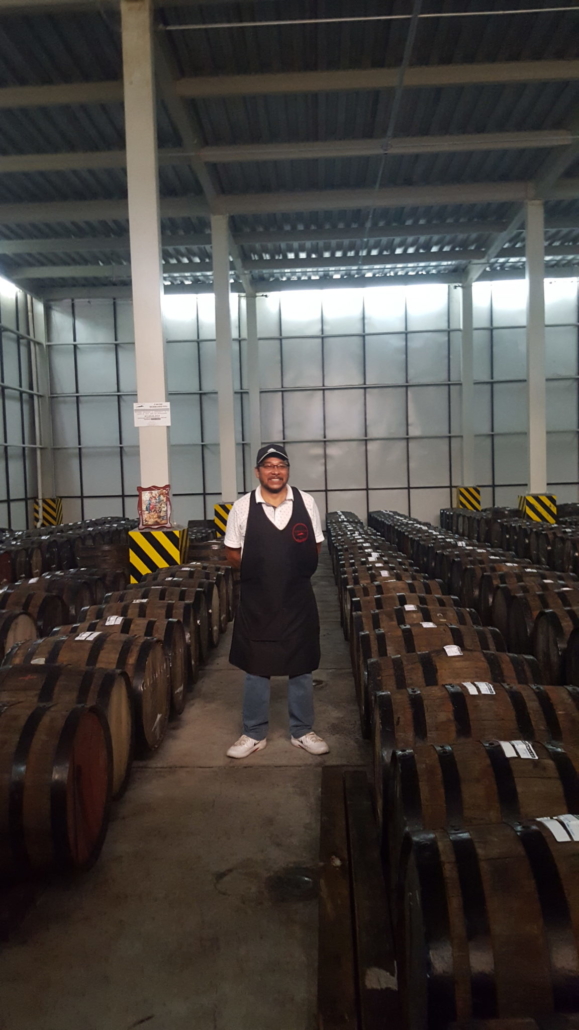
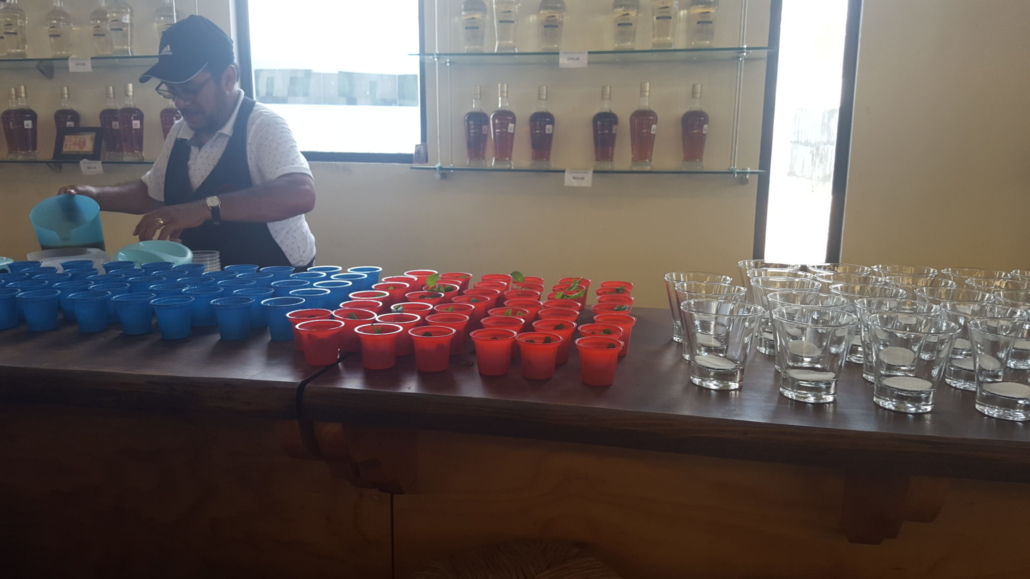
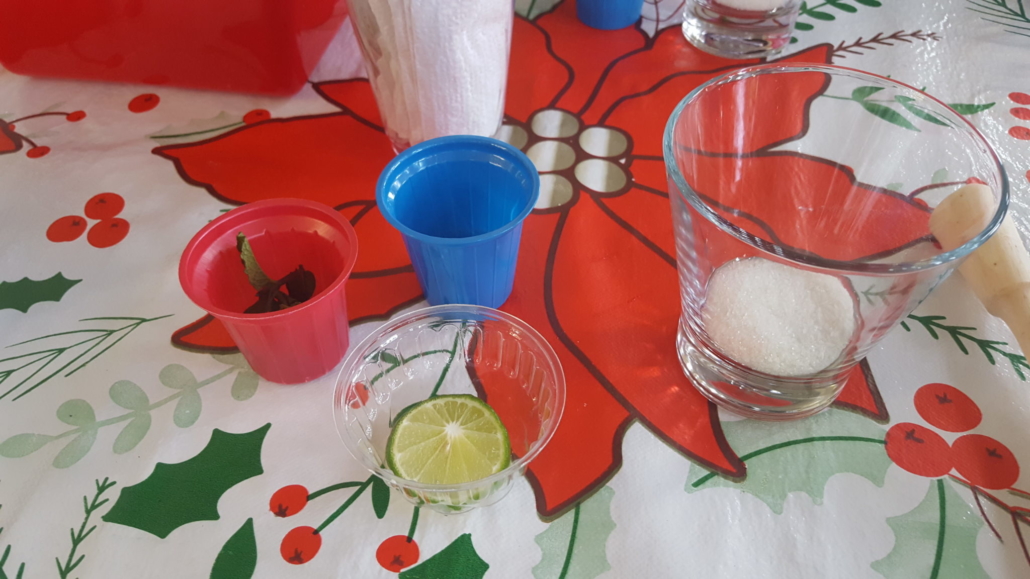
The only disappointment with this trip was the fact that we could not stay longer. We explored only a small part of this wonderful city. I keep wanting to go back and see more. It has that special feel. I would highly recommend a visit to Colima.
We had an excellent tour guide, Florencio Amexcua Quiroz. He was very knowledgeable about Colima and the surrounding area. I would definitely use him again for a guide. Email: corazondecolima@gmail.com Phone: (312) 314-08-96
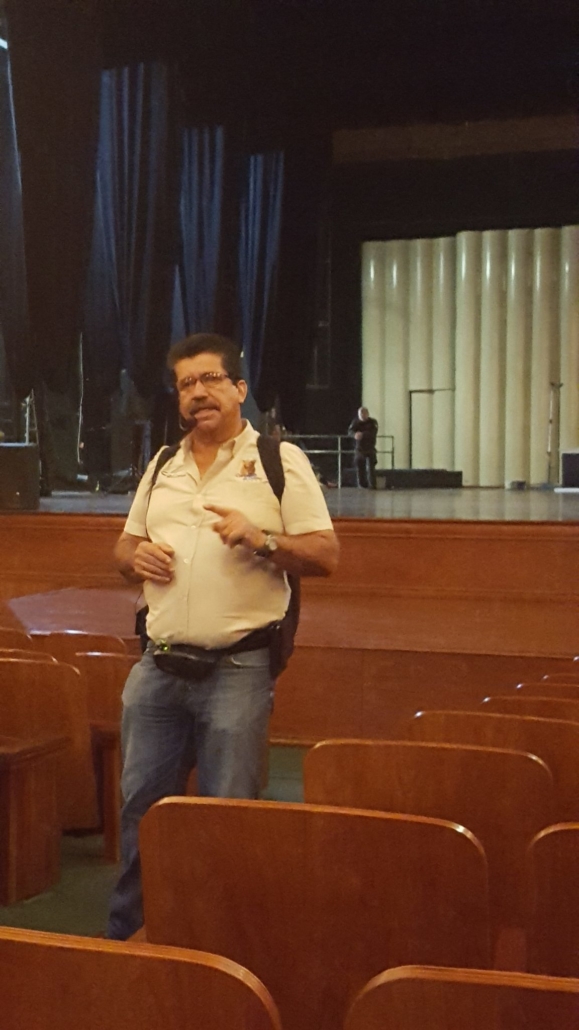
Beaches of Costalegre, Mexico
“To move, to breathe, to fly, to float, to roam the roads of lands remote, to travel is to live.” Hans Christian Anderson
Beaches of Costalegre, Mexico
The literal translation of Costalegre is Coast of Joy, renamed from its original name “The Virgin Coast.” Little wonder that it is named the Coast of Joy as there are 43 pristine beaches, capes and bays along the state of Jalisco, stretching from Puerto Vallarta to Manzanillo, each Bay within a few kilometres of the next.
I have not been to all of them, although that would be an interesting project one day.
Barra de Navidad and Melaque share the same bay, Bahia de Navidad (Bay of Christmas). The bay was used by the Spanish in the mid-16th century for shipbuilding, repairs and as a jumping off point to the Philippines.
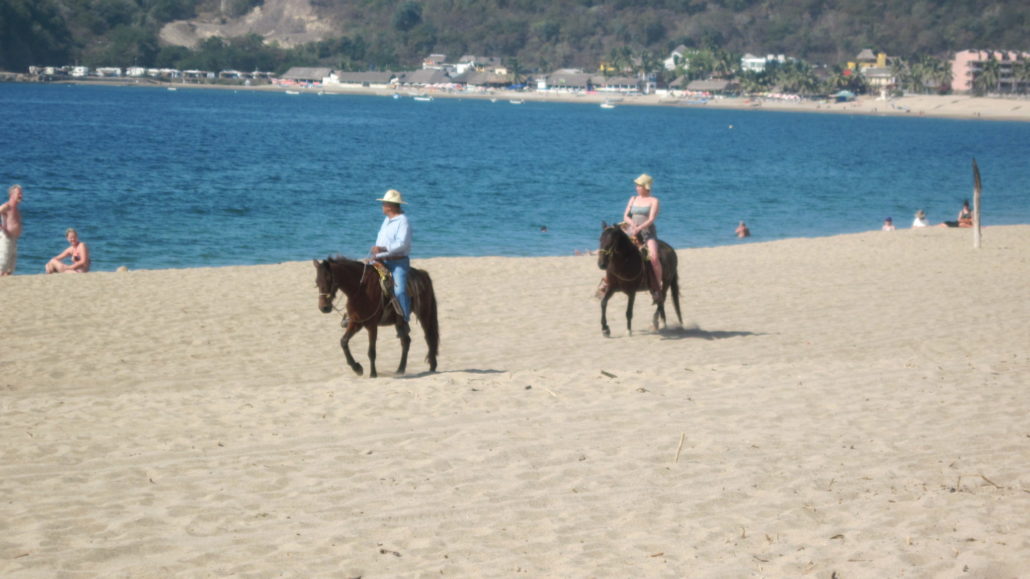
Barra is a popular vacation destination with easy access to the Grand Isla Navidad/Resort via taxi boats, about a 5-minute boat ride. The taxi boats also transport people to the small community of Colimilla, where there are a few restaurants that line the shore. You can hire a taxi boat to give you a tour of the surrounding area. It is an inexpensive and very interesting way to spend an hour or two. The water at this end of the bay is popular with surfboarders as the waves are high and frequent. There are plenty of restaurants and entertainment venues in the area.
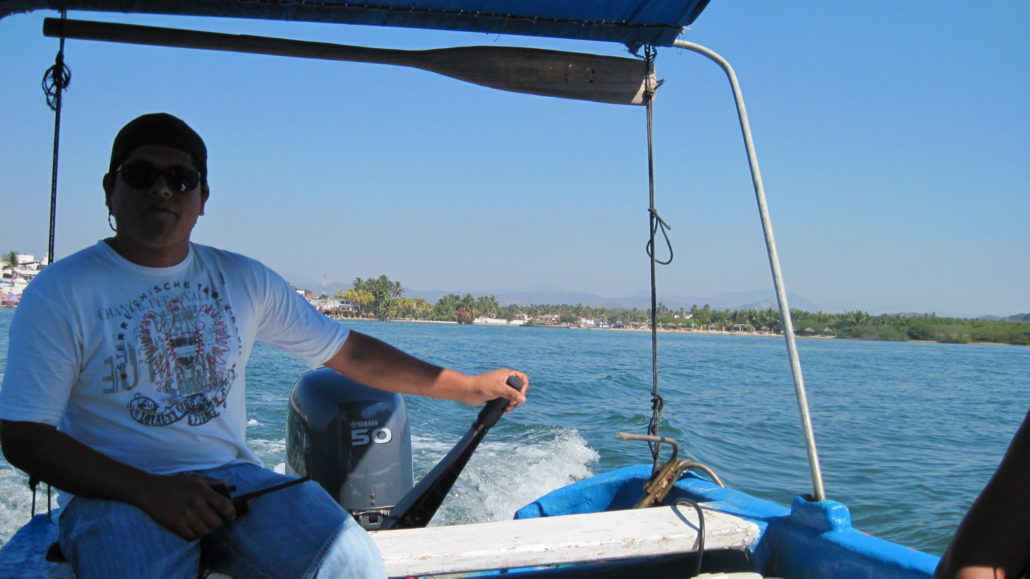
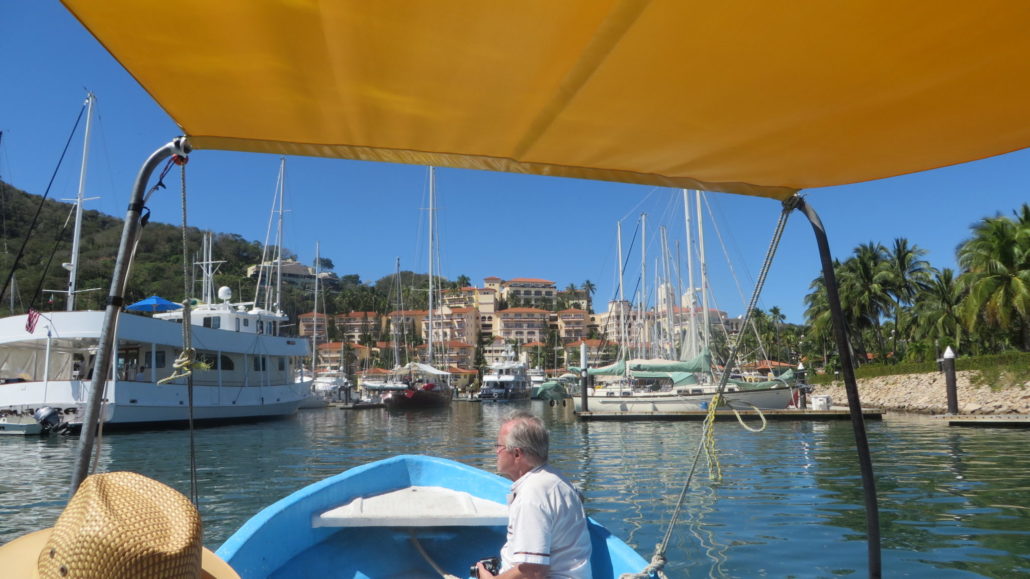
Melaque is conformed by the villages of San Patricio and Villa Obregon. San Patricio takes its name from the Irish Saint Patrick and celebrates him on Saint Patrick’s Day on March 17th. The celebration starts seven days before with the finale on the 17th. The beach at the west end of the bay has a smoother surge, and the slope is flatter than at the other end of the bay. There are quite a few restaurants, hotels and entertainment.
Between Barra and Melaque is a freshwater lagoon which, after seasonal rains, the locals open up occasionally to the ocean to release extra water. However, sometimes a crocodile ends up in the ocean until it can find its way back to the lagoon. This can make for some interesting times while swimming!
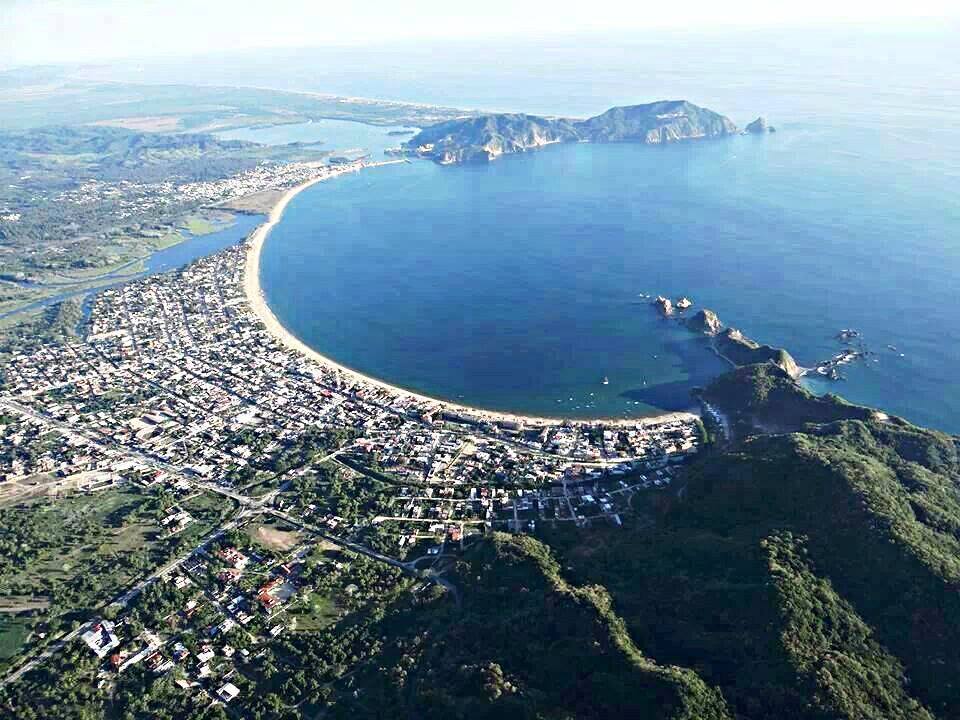
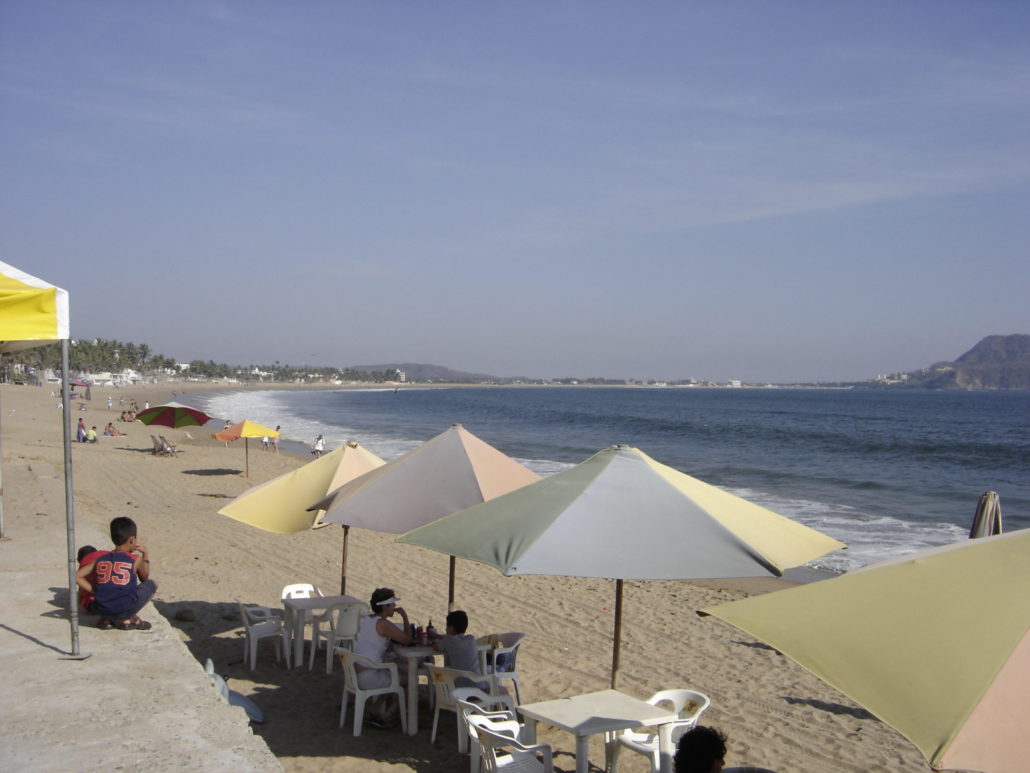
Cuastecomate is a small bay approximately a ten-minute ride from Melaque. There is no bus service to this little community. This bay is one of my favourites. Although it is small, the water seems clearer, and there is good snorkelling here. The beach is lined with restaurants, and there is a hotel/resort at one end. Cuastecomate is one of the only handicapped beaches in Mexico. The wife of a local Governor made this her project, and now it is an excellent example of what can be done to make any beach handicap accessible. The streets have been paved, the sidewalks have braille for the visually impaired, and there are special wheelchairs available that can go into the ocean.
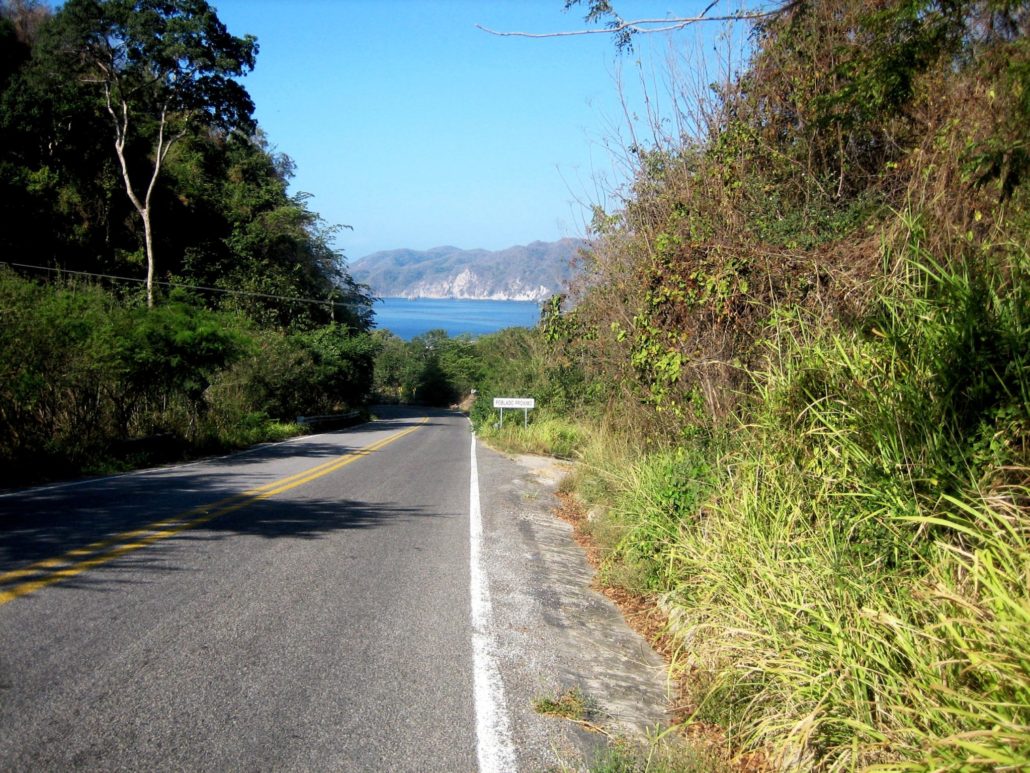
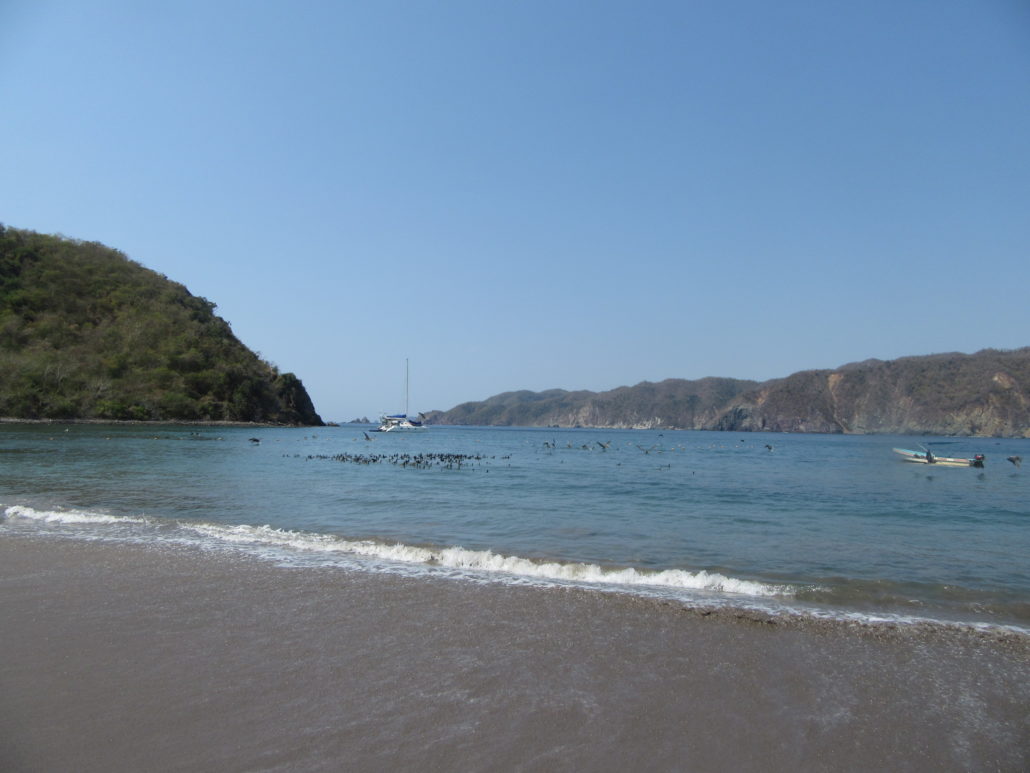
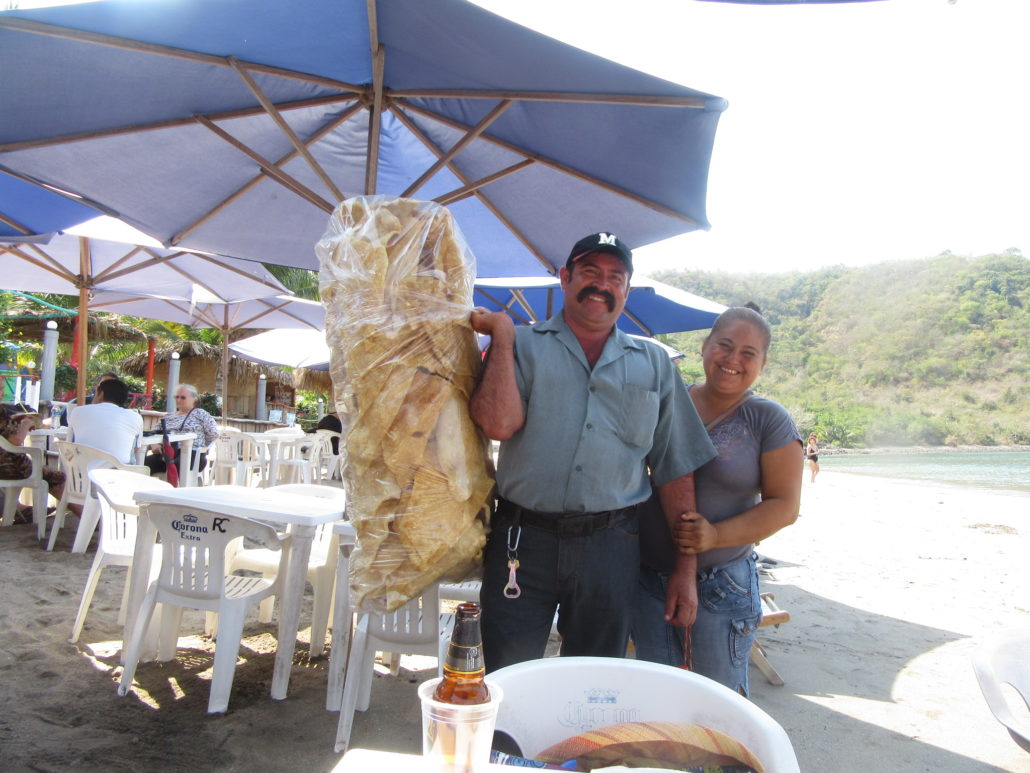
Happy Vendors selling huge pig skins
La Manzanilla is another one of my favourite beaches. I am not sure of the length of this beach, but you can walk for hours on its flat surface. The water is crystal clear.The town is a funky, artsy place, where artists from all over come to stay. There is a lot of talent here. One word of warning. There aren’t any banks or ATM’s. The locals take the bus to Melaque, approximately 20 minutes away to use its banks and pick up groceries. The town does have a few grocery stores, but Melaque has more selection. The other claim to fame for this town is the crocodile sanctuary. You can walk through the sanctuary to see the crocodiles in their natural habitat. Some of them are huge! The chain link fence which borders along part of the town has some parts that a crocodile has obviously pushed through and escaped. It can be just a little disconcerting when walking along the sidewalk right next to the fence.
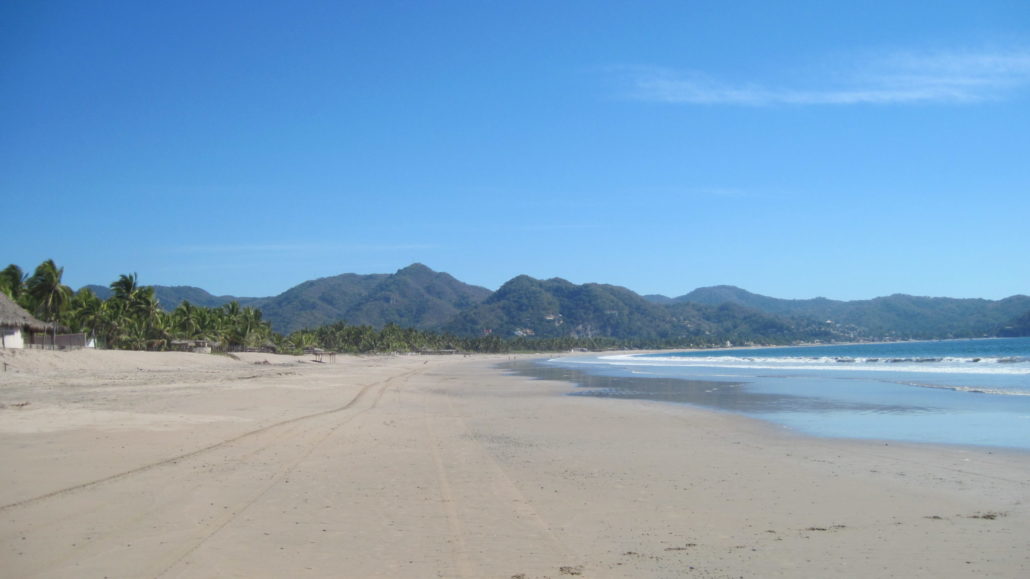

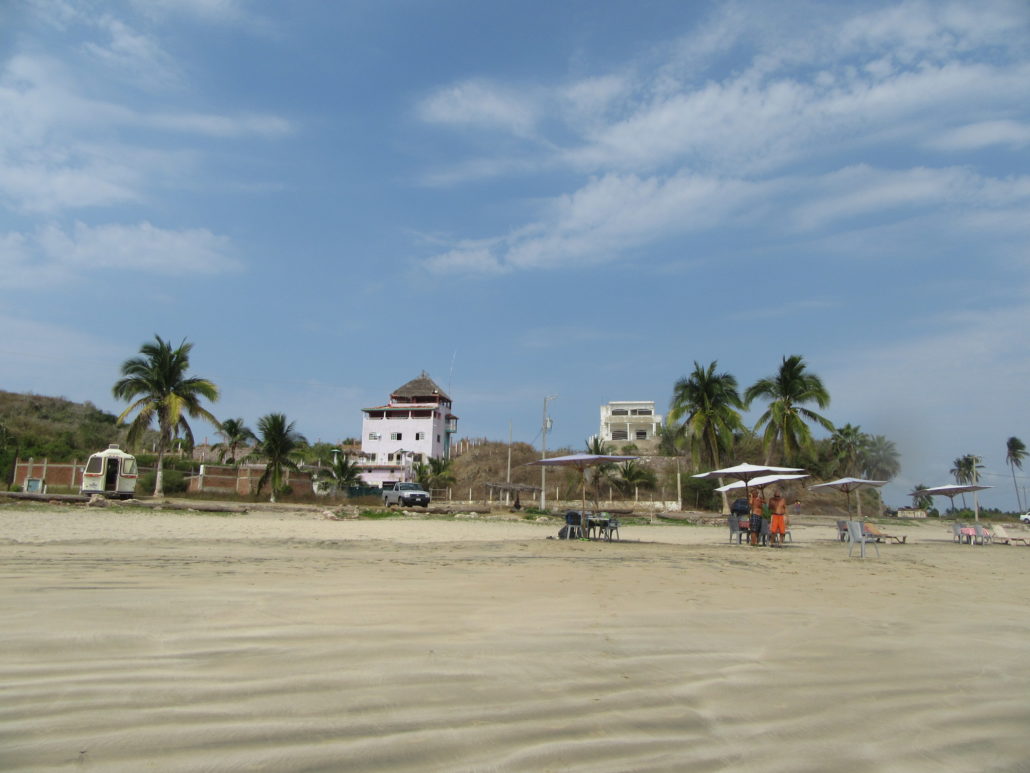
Tenacatita is another beautiful beach with an adjacent snorkelling area. Apparently, the snorkelling is one of the better ones in the area. The only way to get to this area is by car or by going on a tour through Esmeralda’s Restaurant. They provide a van or bus to get you to the beach and take you back approximately 4 hours later. There is only one restaurant on the beach so far. There is another one further up the road which will deliver the food to you. There are plenty of tables and umbrellas. Tenacatita boasts beautiful wave crashing rocks and a section of coral strewn beach.
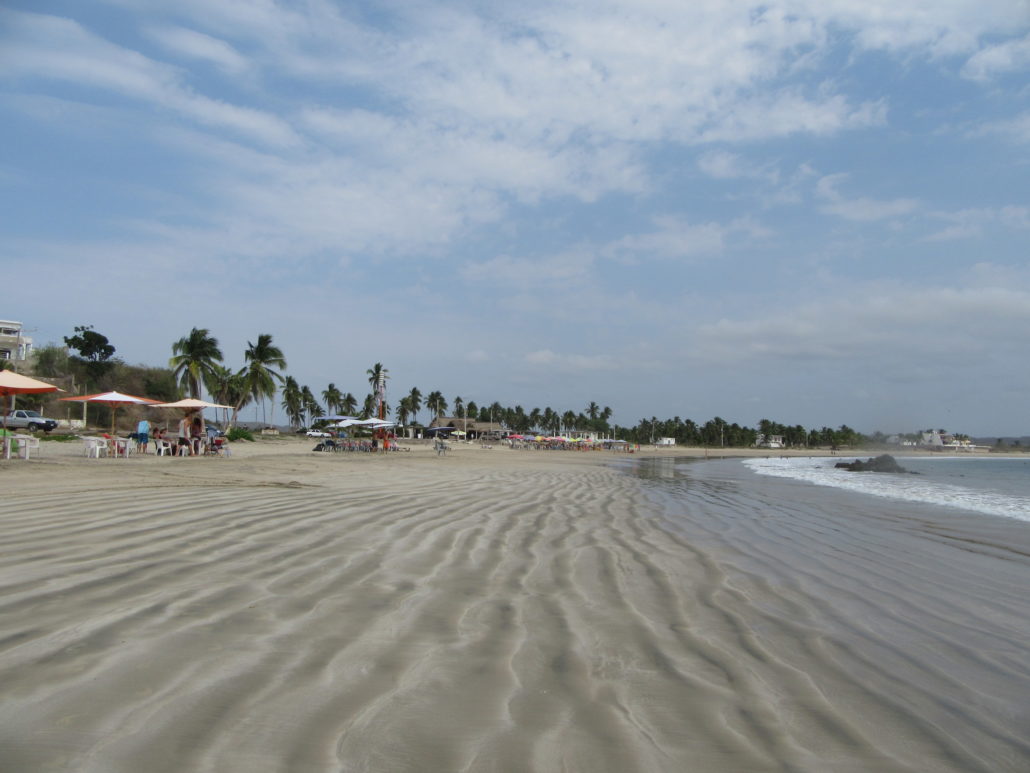
Overcast day

In Chalacatepec, between Morelos and Campo Acosto, is a little beach and town. There are rumours of future tourist development and that this area will be built up to include an airport. Already there is a runway. This seems plausible as this area is halfway between Puerto Vallarta and Manzanillo. It would shorten the trip for people who normally fly into Puerto Vallarta and head south to Melaque. It would also open up the area. Depending on your point of view, that is either a good or bad thing.
These are just a few beaches that I am familiar with, and as you can see, these certainly do live up to the “Coast of Joy.”
Color of the Earth: The Cuzalapa Coffee Plantation
A mind stretched by new experiences can never go back to its old dimensions. Travel. Learn. Grow.
I was fascinated by the story of a group of 15 women who, approximately ten years ago, formed a coffee co-op. They kept it a secret from their husbands as it was considered men’s work. The husbands eventually found out and with the exception of one husband, were on board with what the women were accomplishing. They were bringing in much-needed money into the households and the community. The one husband who did not agree with his wife belonging to this group told his wife that if she wanted to do this, then she could pack her bags and leave. To this day, she still does not belong to the co-op.
The women have accomplished a lot during the past ten years. They started selling 5 peso bags of coffee to the University of Guadalajara students and teachers which they roasted in a clay pot. The University allowed them to use a hallway.Today, they have a 10 kg. and a 5 kg. roaster and a large building.



The women faced many problems including a lack of education. Many of them did not know basic arithmetic, and when people bought their coffee, they had to rely on their honesty in giving them the correct amount. Most of them have gone to school now to complete the primary grades.
There is so much more to the story which I will be telling at a later date.
I took the tour, which is run by Mex-Eco Tours and starts from Melaque, Mexico. It is approximately one and a half hours drive to the Co-op. The co-op is aptly named Color de la Tierra (Color of the Earth). When you arrive, the women will have lattes and homemade cake ready. One of the women takes you to the coffee plantation. It is not row by row coffee plants. The plants are scattered around and under trees. This coffee is shade-grown, organic coffee. The trees which supply the shade are different types of fruit trees that the families eat and also provides fertile ground for many medicinal plants. The guide will point out the different plants and explain what they are good for, i.e., stomach upset, headaches, etc.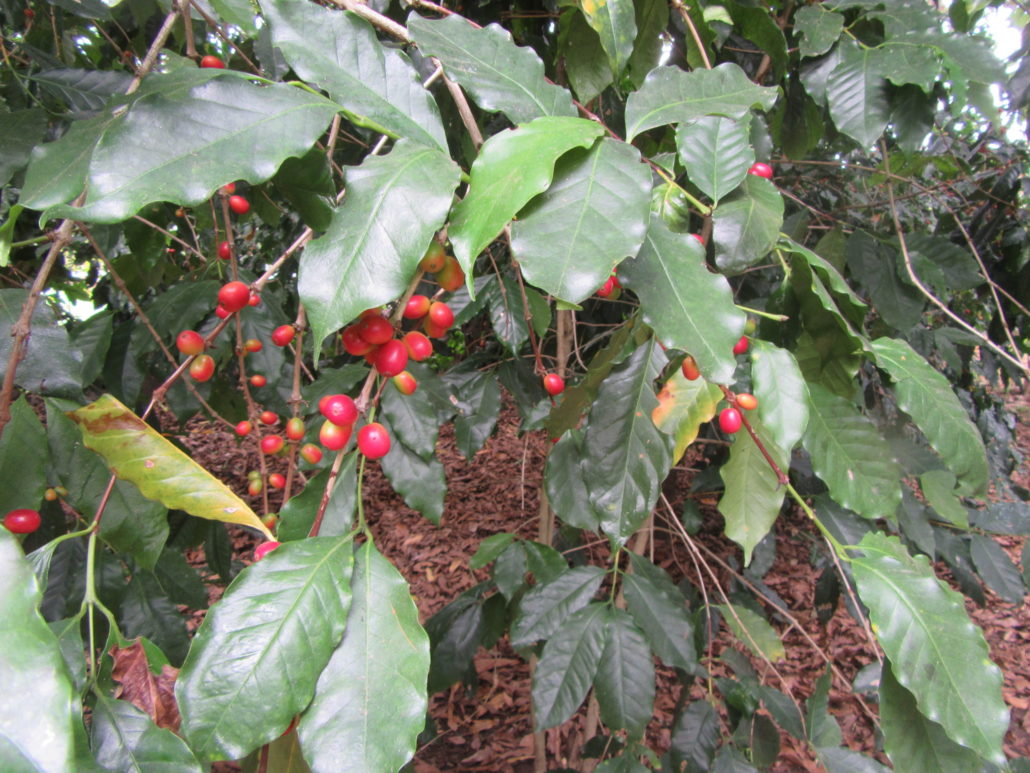
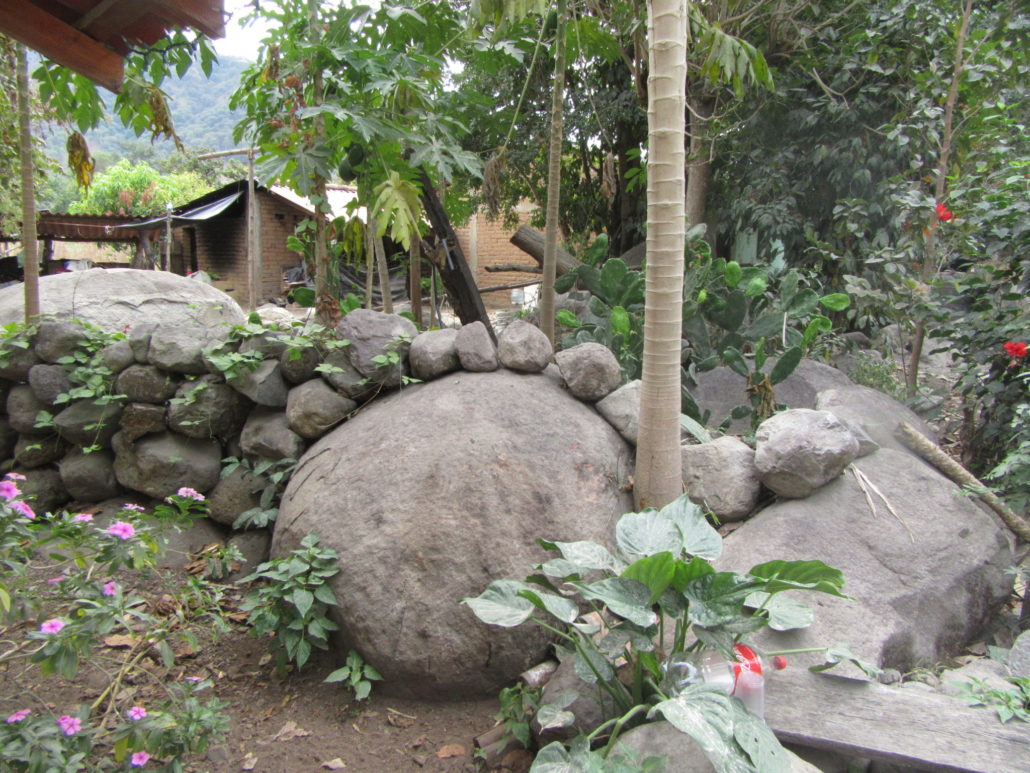
On the way to the plantation. Interesting solution to a big rock in the way of the wall.
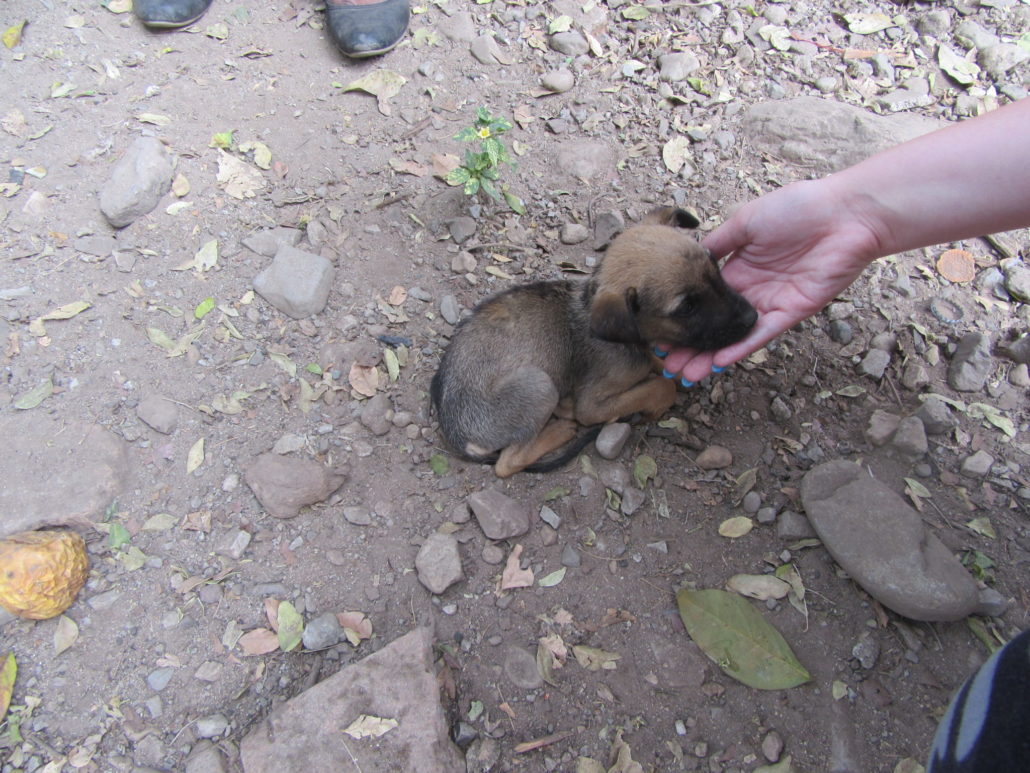
Cute little puppy on the way. He was very cold.
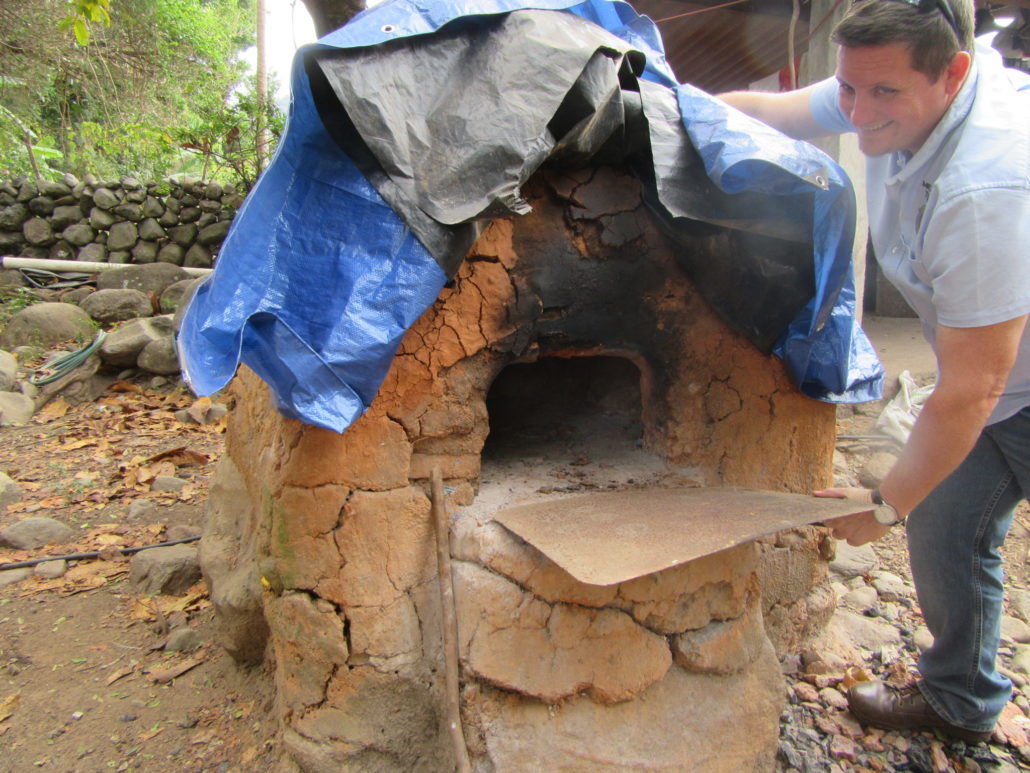
Clay oven which is used to cook big pots of food
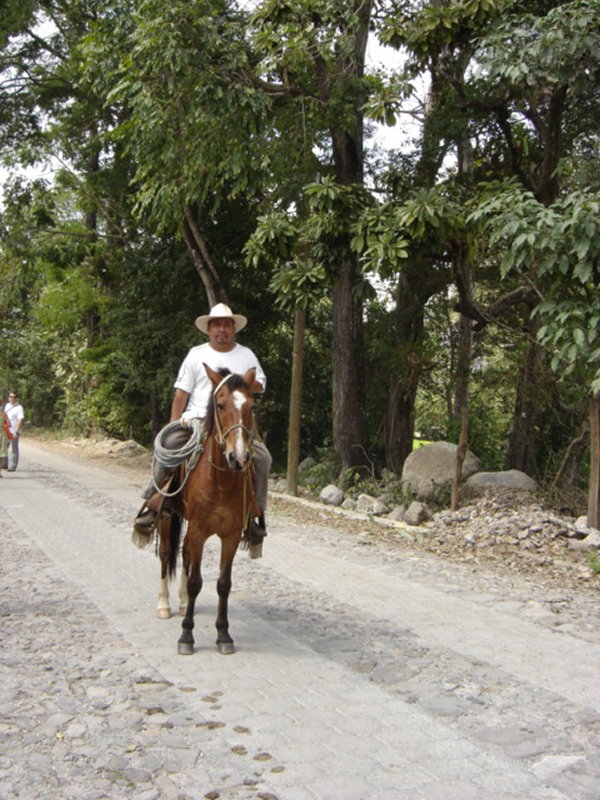
A local man on his way to his farm
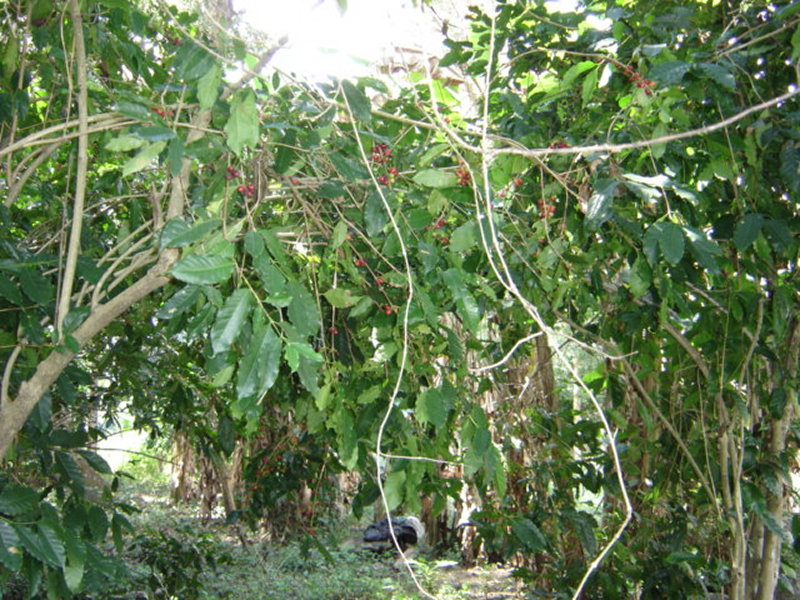
After this tour, you will head back to the building where they will show you the facilities. They dry the beans on the rooftop and in a greenhouse. Each night they will gather the beans, so the beans do not get any morning dew or moisture on them and then place them back on the roof.
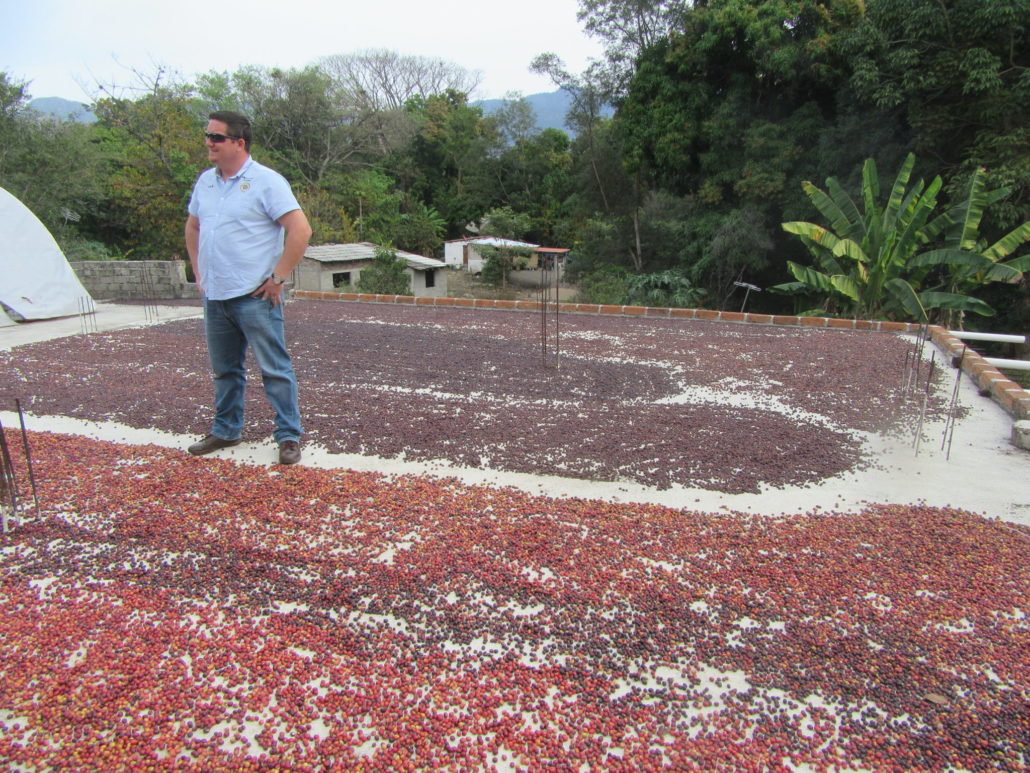


Mojote Beans

Corn
They now have a separator which separates the husks from the bean. After that, the beans are taken downstairs to the tables where they physically separate the whole bean from beans that have split. They have to do this before they roast as the split beans will roast faster than the whole bean.
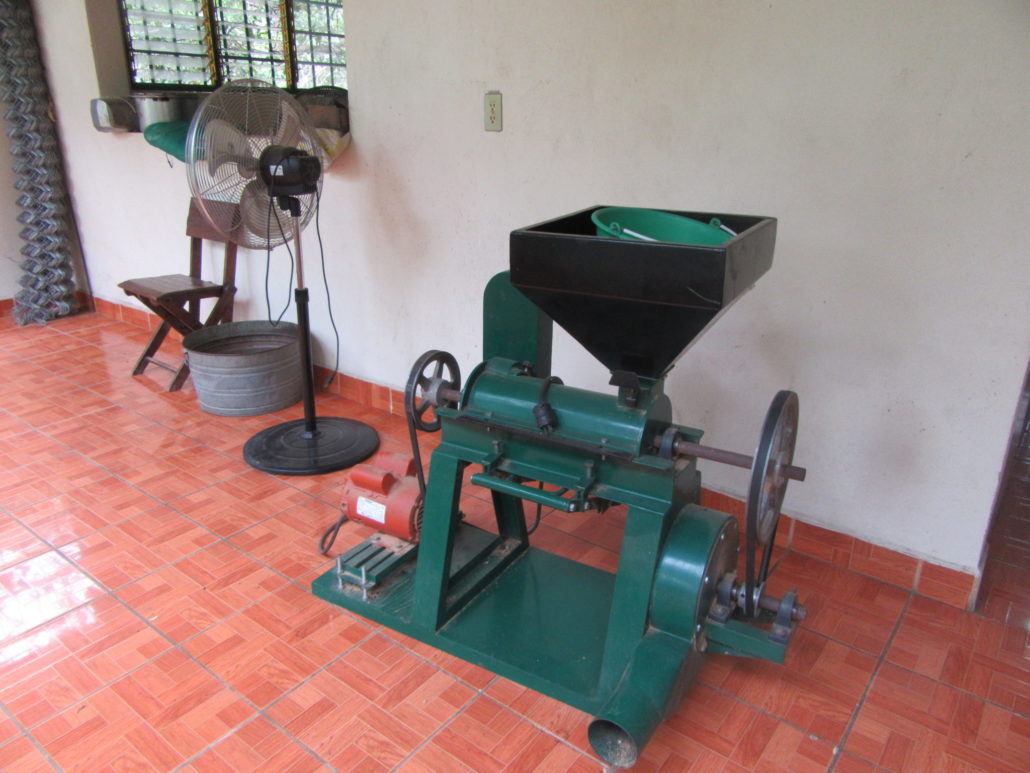
Beside the new one, you can see the old method of throwing the beans in the air and letting the fan do the separating.
Because of the demand, they will purchase beans from neighboring communities. This helps a lot of small communities.
After the short tour, they serve a typical Mexican lunch. The food was all locally grown and harvested. It was so delicious.

Chicken and fresh vegetables on a blue tortilla. There were other dishes served as well.
The other project they are working on is informing people about the mojote tree. The mojote tree is an ancient tree that kept the Aztecs alive when they were in hiding from the Spanish. They show posters that indicate how much more potassium, iron, Vitamin C, etc. that the mojote tree has over other sources such as bananas. The nuts are ground into a flour or a coffee-like substance. The tree is so important that the women go around the country informing people about the benefits of the mojote tree and encouraging them to grow more. There are 52 names for this tree around Mexico. Another popular name is the Maya tree.



The women also sell other food items or crafts. Some of the items are from women from the surrounding communities. This way, the co-op helps their economy as well.
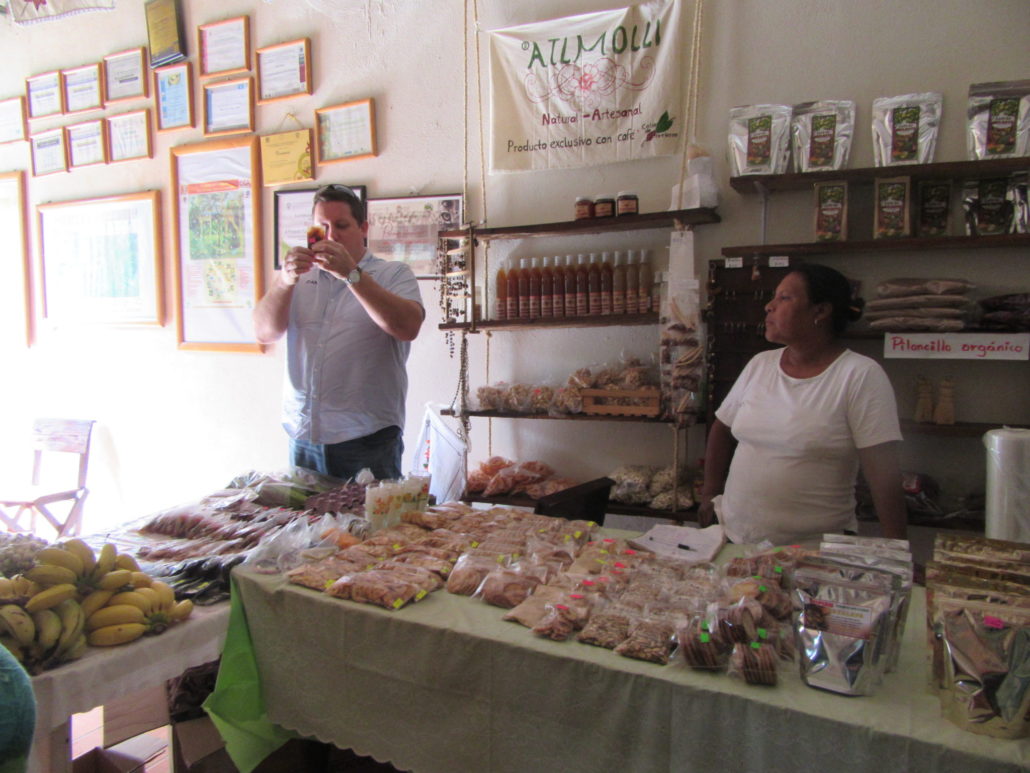
The last stop is to Cuautitlan where we bought homemade ice cream and toured around the town square.

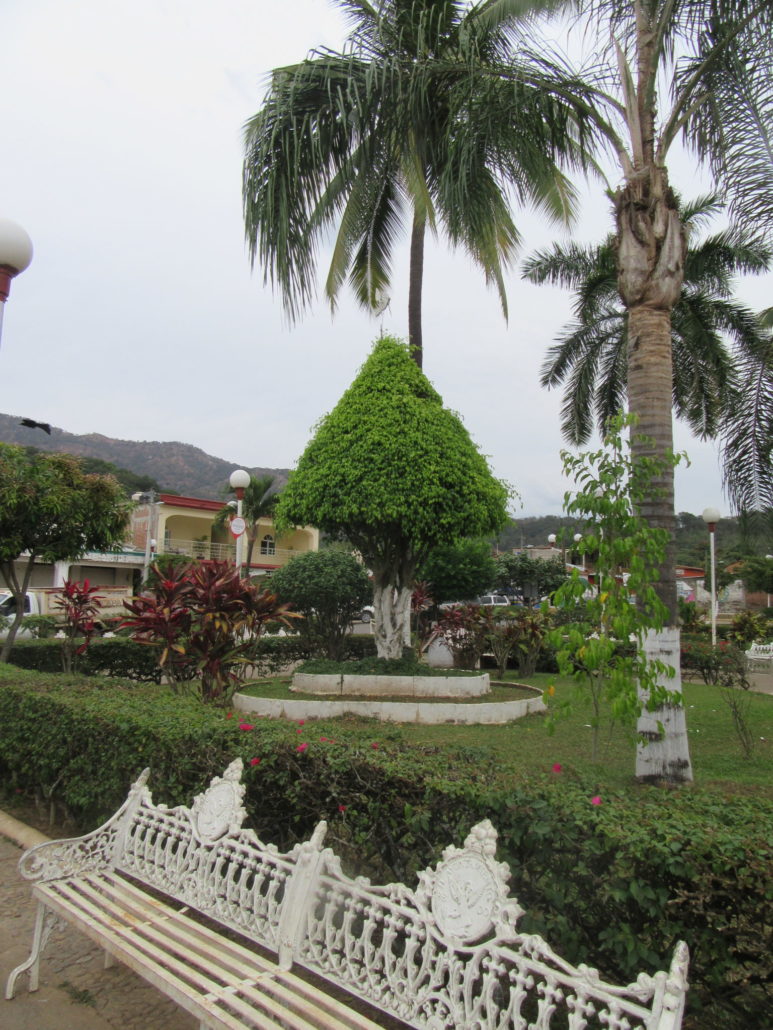
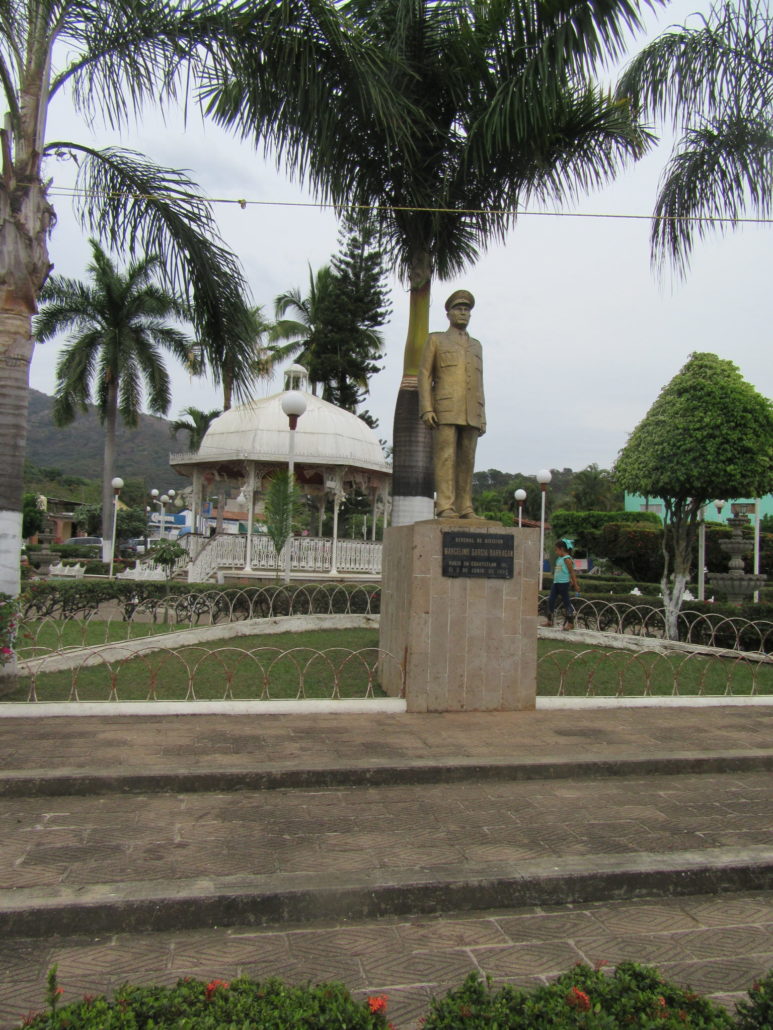
Careyes Polo
“I just want to go on more adventures, be around good energy, connect with people, learn new things, grow.” Anonymous
“Do you want to go to a polo match?” we were asked. “Sure, of course, we do.” But I was thinking – polo in Mexico? When you think of sports in Mexico, you probably think about soccer or boxing, but polo? After a bit of research, I discovered that the first polo club was established in the Mexican Jockey Club. Since then, Mexico has won the sub-championship in the World Polo Championship in 1987, a Bronze medal at the 1900 Paris Olympic Games, and the 1936 Berlin Olympic Games. The Mexican Polo Federation (FMP) consists of 15 clubs, and 350 male and female players.
An outing to the Careyes Polo Club was organized for a small group. We took our choice of beverages and snacks and off we went in a rented van. After a short hours drive, we arrived at the well-manicured polo fields at Careyes.
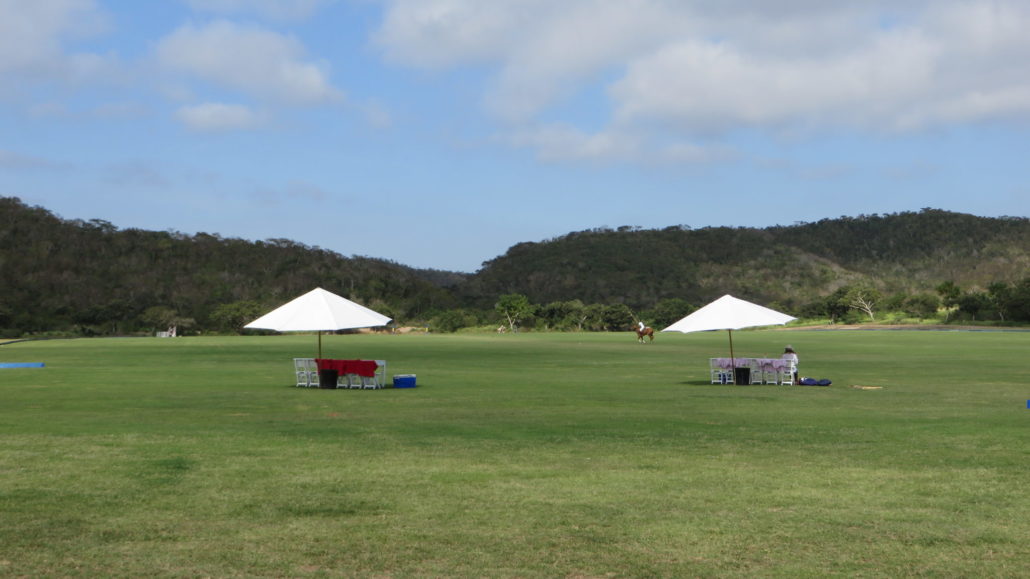
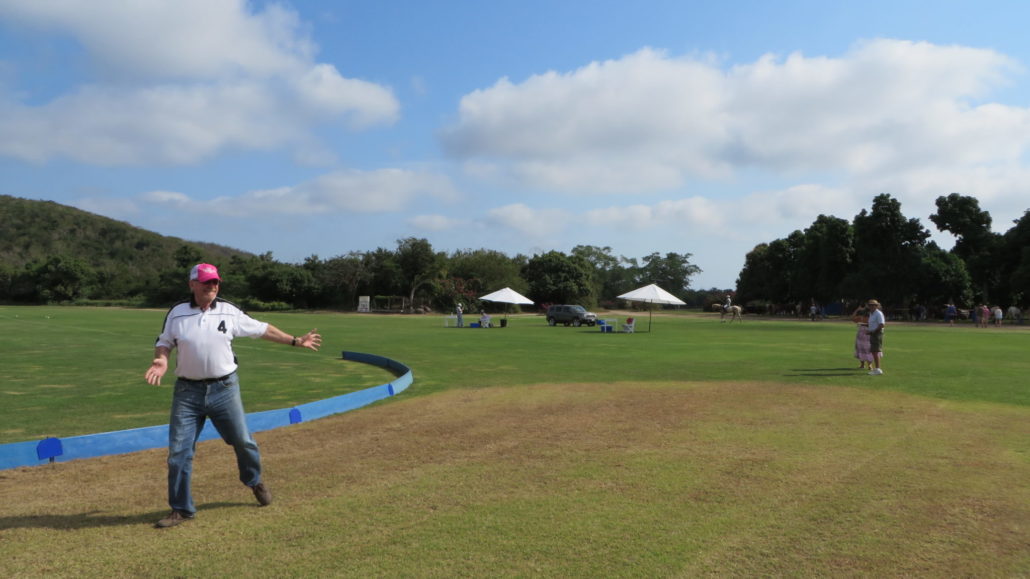
A little history of the Careyes Polo Club. It was inaugurated in 1990. They have two regulation Bermuda grass fields and stabling for 150 horses although they only keep 60 playing horses on site during the polo season which typically runs from November to April. Games are held four times a week. They are affiliated with FMP, the Mexican Polo Federation and is a sister club of the Chantilly Polo Club in France.
I was surprised by all the horses ready to play for two teams of four, but the game was divided into seven-minute “chukkas” or rounds. There are four to eight Chukkas in a full polo game with a short break between each one where they change horses.
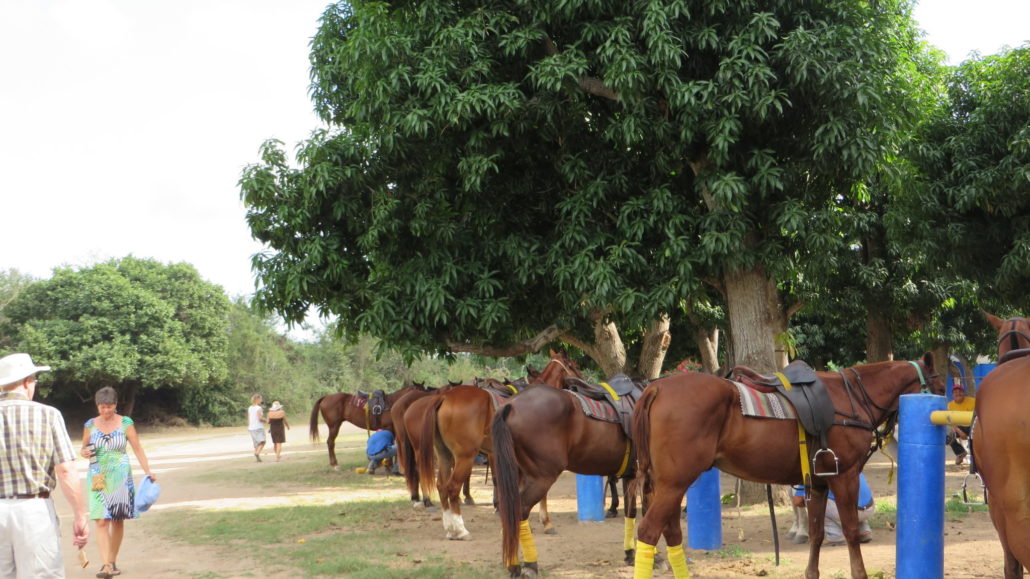
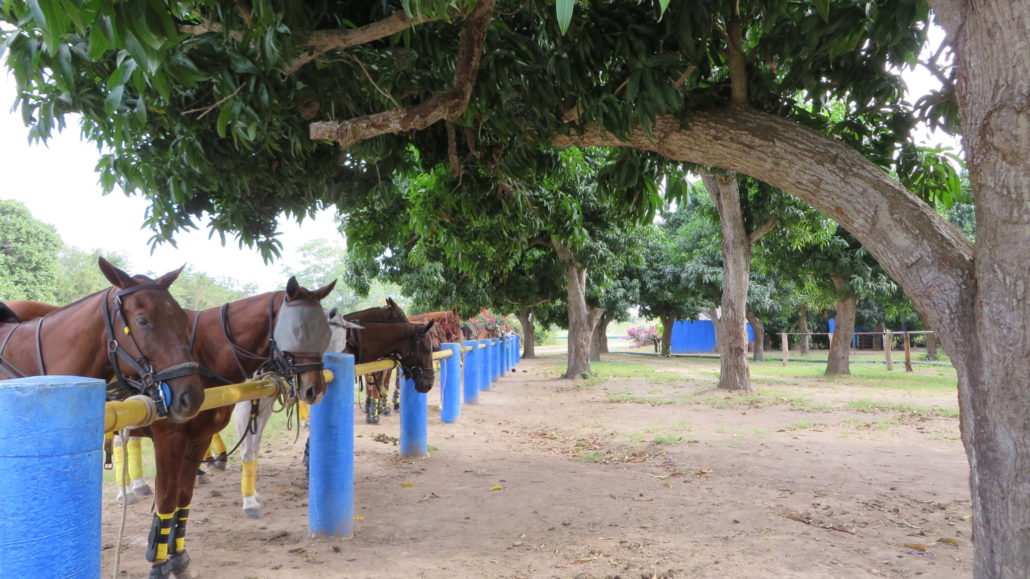
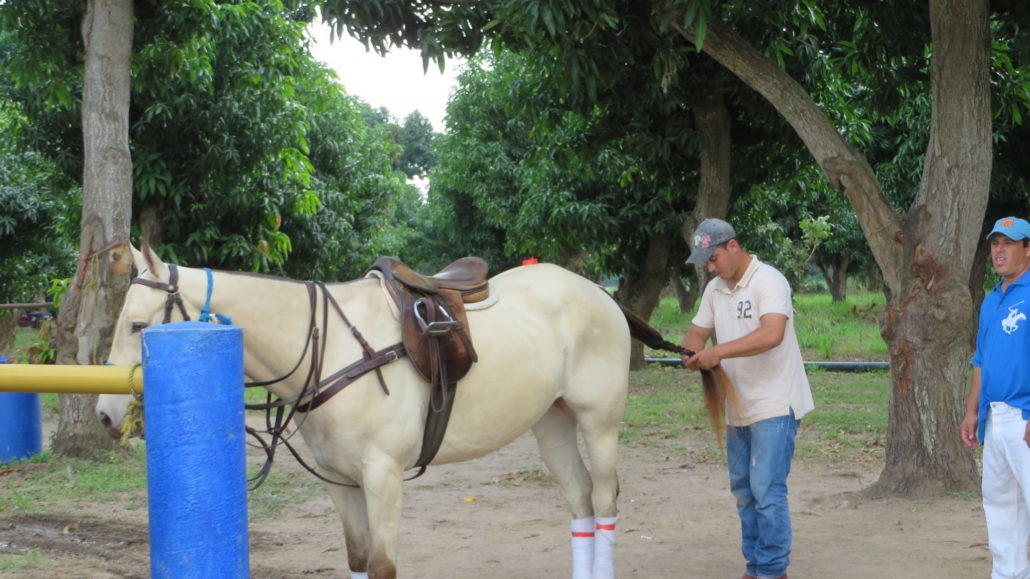
Players from all around the world, USA, Italy, Spain, Germany England, Peru, etc. come to Careyes to play.
The day we went, a women’s team was playing. Each team had members from different countries. I don’t know anything about the rules for playing, but it seemed strange that they had one token male on each team. He wasn’t allowed to score. That must be a different situation for men!
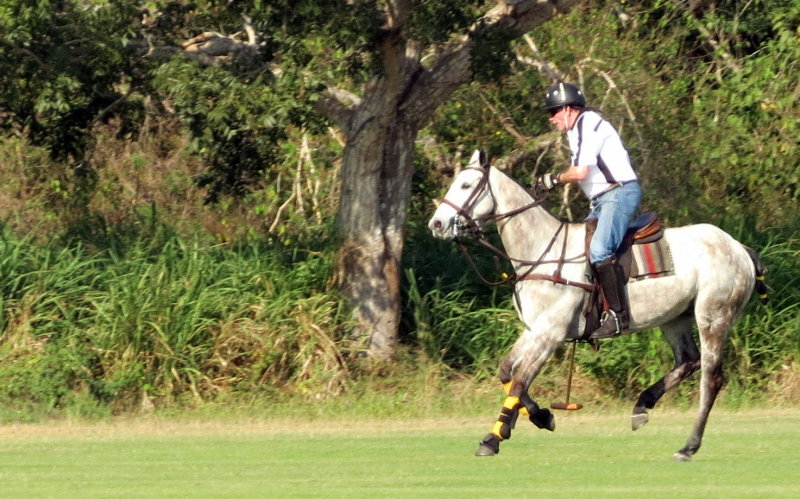
Sometimes it is a fast-moving game. (click on game)
Even with not knowing the rules, we all cheered on whatever team we had chosen and had a great time.
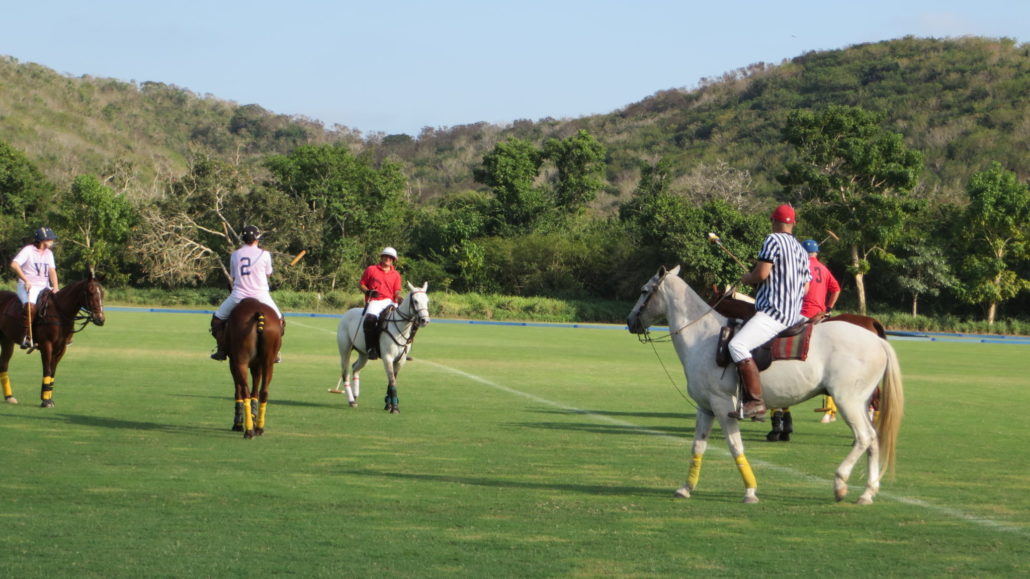
We soon discovered that it was a difficult and at times a dangerous game. Keep your eyes to the left of the screen. Polo tumble. (click)
At halftime, the spectators were invited out to the field for stomping the divots created by the horse’s hooves. Stomping the divots in place helps the grass repair itself and protects the horses from tripping or falling into a hole. Apparently, this is a tradition in polo, usually done while sipping champagne. We were not given any champagne but what the heck, it was fun. It gave us a chance to get off our duffs, stretch our legs. Next time, I might bring my own champagne!
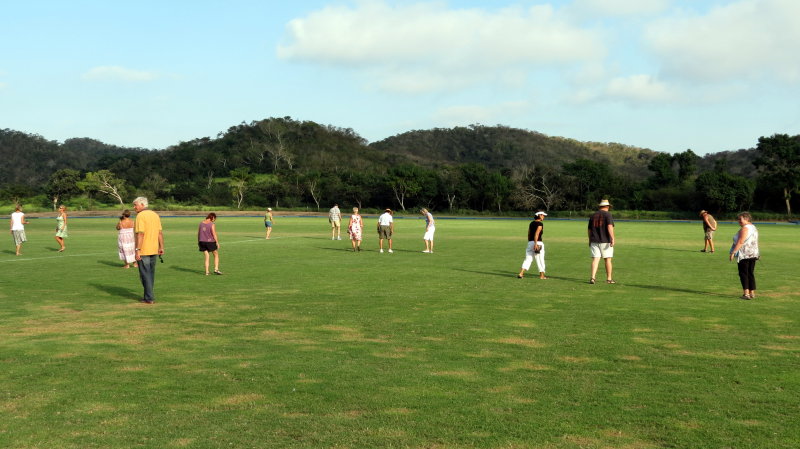
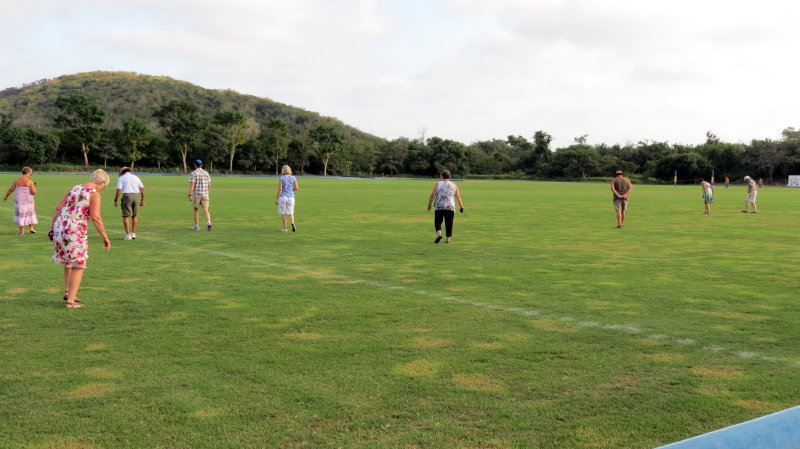
Once the game was finished, and the winners were announced, trophies were given out.

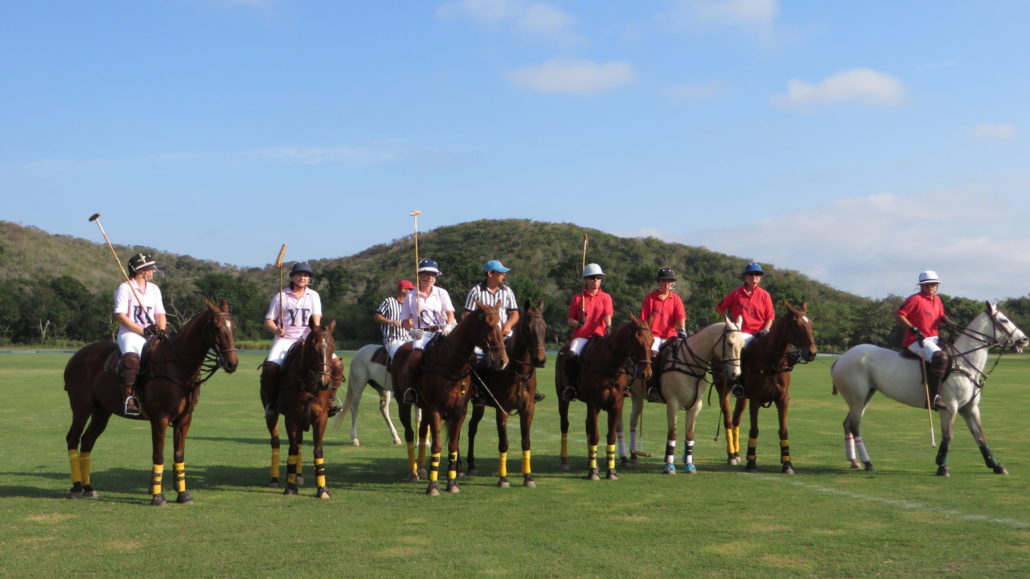
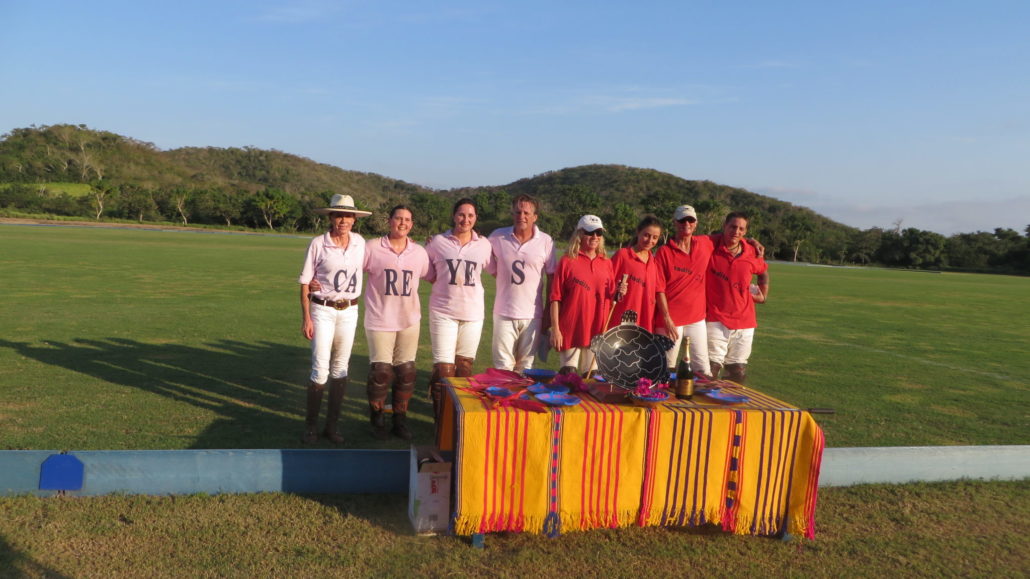
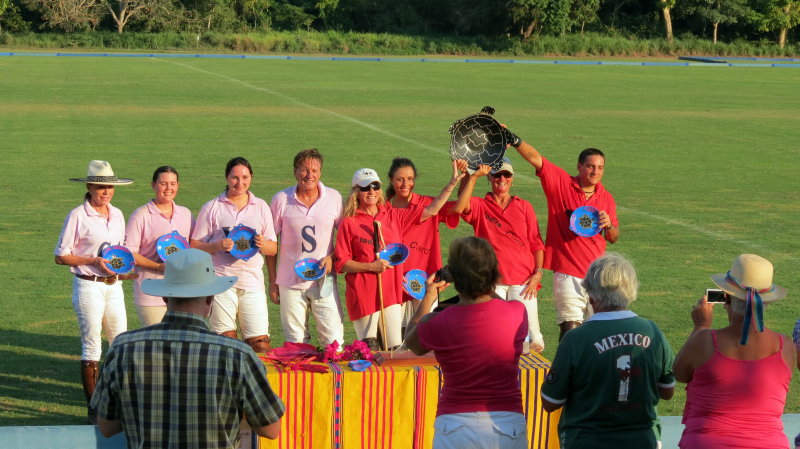
We headed to the town of Careyes, (meaning turtle coast), to have dinner where, in 1968, Gian Franco Brignone bought the land and began inviting his jet-set friends. He built Careyes into an ultra-exclusive resort with 52 castles, villas and casitas that serves as a residential community and resort. There are two small hotels, five restaurants, a contemporary art gallery and 8 miles of coastline. Careyes is protected by a 32,000-acre land reserve. Careyes has attracted guests like Bill and Melinda Gates, Seal and Heidi Klum and other celebrities. Apparently, to buy a home here, you have to meet 27 conditions such as:
“Appreciating the music of sky, earth, and sea”;
“Be a polyglot, or at least one member of the family be fluent in two languages”;
“Having committed most of the seven deadly sins”;
“You must have will, love and fantasy”;
“Have a sense of humor”;
“Admire the sunrise and sunset”;
“Live in the present every minute of the day and be aware of the magic of life.Life changes every minute”;
“ Whether you can find the financial means to acquire a home”;
And the last one: “Kneel before mother Earth and ask for permission to own a house.”
That is one interesting list.
Not only did Brignone build this community, but he also was dedicated to helping the communities around Careyes. The Careyes Foundation was created to help the local communities by providing programs for children such as an early start in English and Math, surfing and bicycle polo lessons to encourage an active lifestyle. The program also includes an innovative agriculture program designed to teach the children to grown their own vegetables.
Another program is the turtle preservation program. The program started with only 11 turtles who returned to the beach to lay their eggs, and by 2013, thirty years later over 1900 turtles nests were protected, and 170,000 hatchlings were released.
We didn’t see any of the glamorous homes or owners/renters but went to what may be considered the town square. There were two restaurants, the art gallery and several art exhibits around the area.
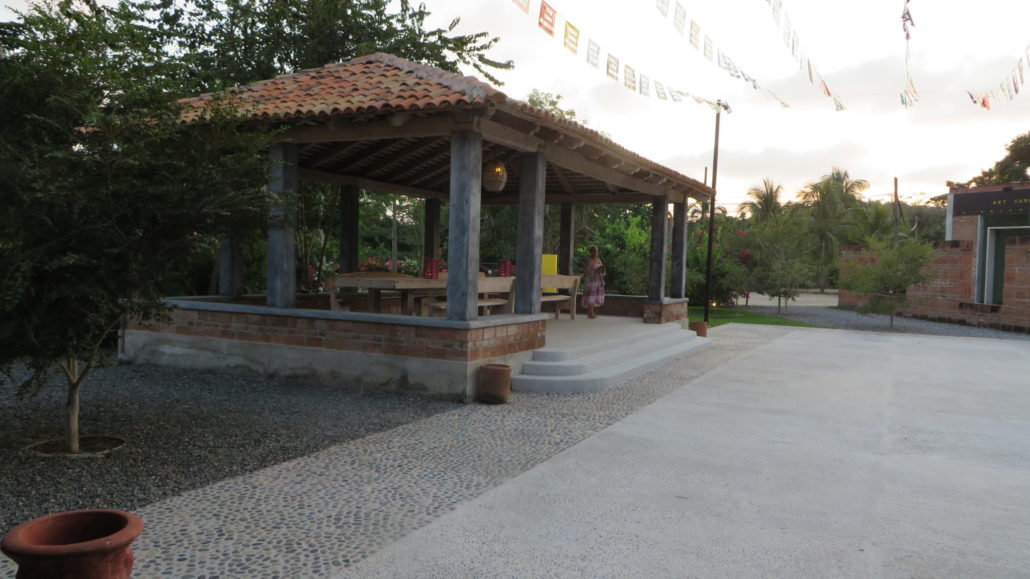
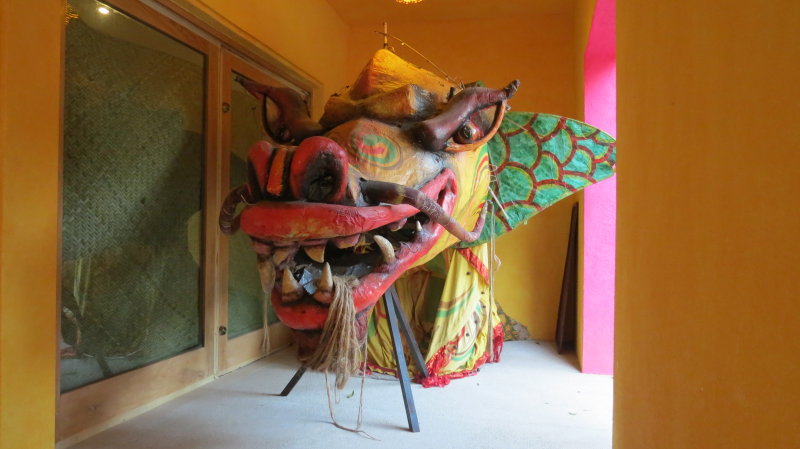
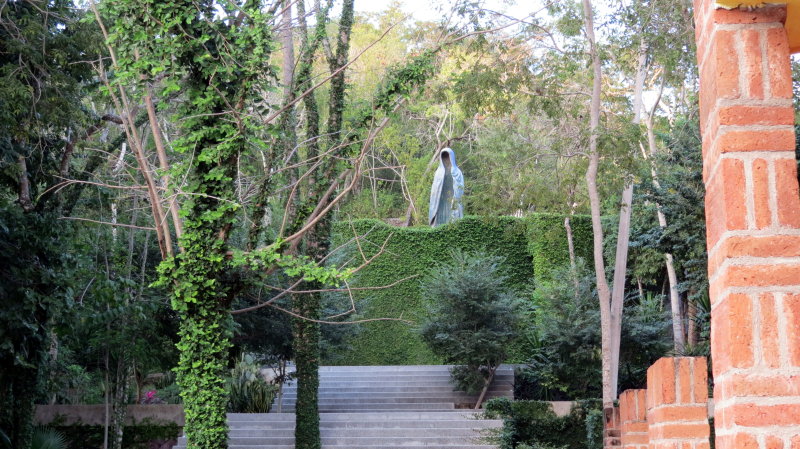
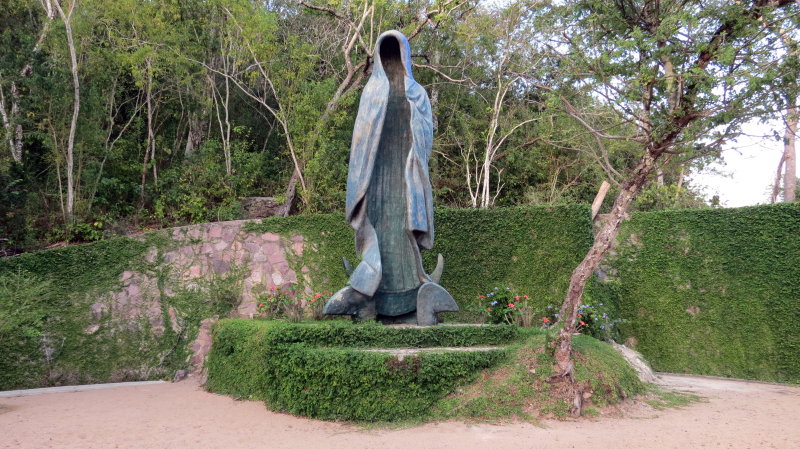
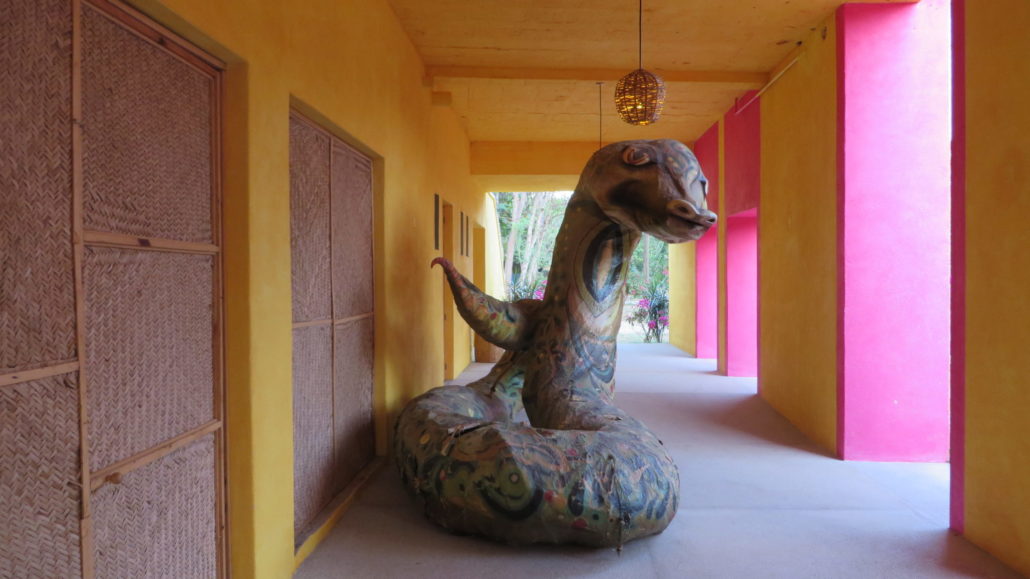
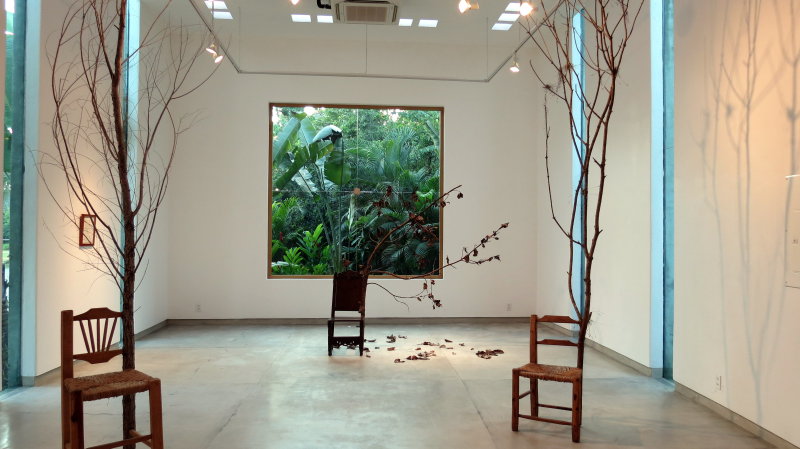
After having a delicious meal, touring the gallery and surrounding art, we headed back to Melaque. What an amazing experience.
Food at your door
Trucks of every description amble slowly down the streets of Melaque, blaring out their wares from the loudspeakers on the top of their trucks. Tomatoes, onions, cucumbers, watermelon, almost your whole produce department is in the back of these trucks. Some just watermelons, others oranges.
I was fortunate enough to be home for the one that sells oranges. I bought a 5 kg. (11 lbs) bag for 20 peso or approximately$1.85 Canadian. Our neighbour Sal kindly juiced all the oranges for us.
Of course this purchase required that the next day we make a trip to Cihuatlan, 18 km. away to buy a juicer. At the Bodega, which apparently means son of Walmart, we found a small one for $15.00 Canadian.
Here’s to good juicing!

